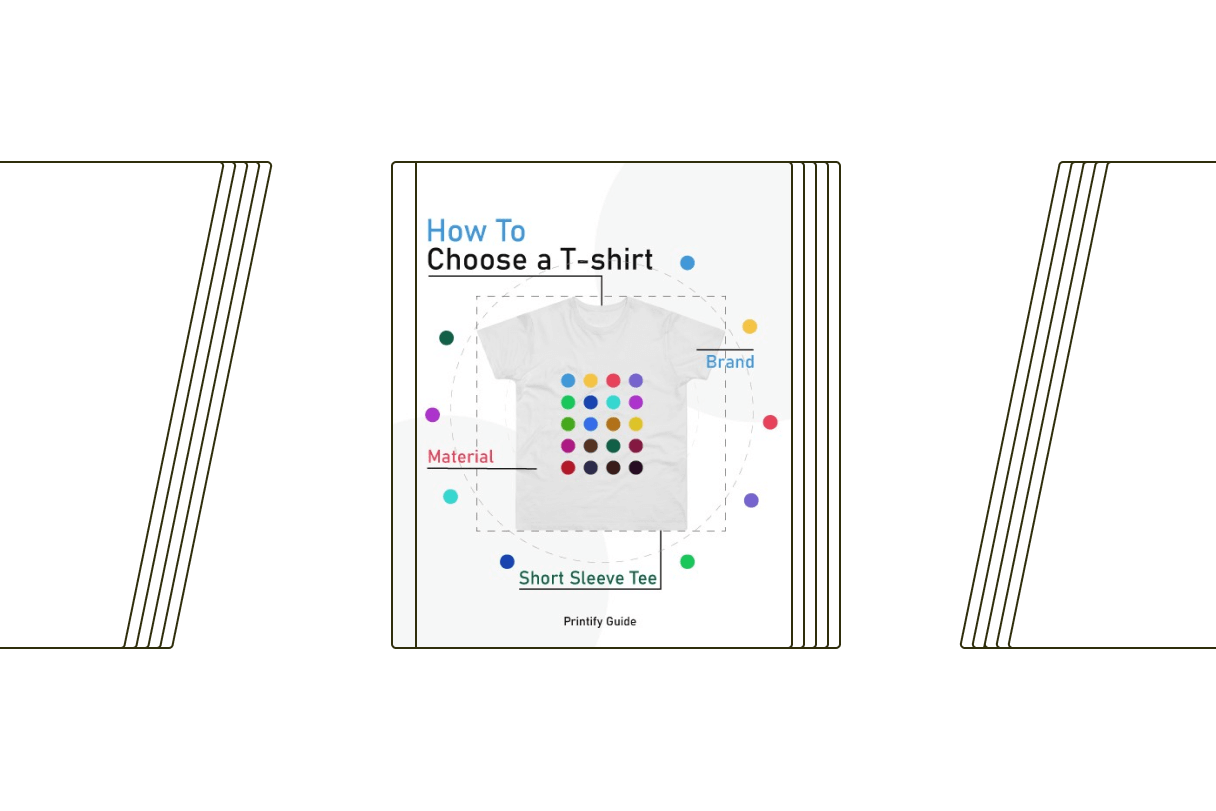Not all t-shirts are created equal. Let’s dive into how to decide which is best for you, the customer, and a store’s bottom line.
Complete Guide on How to Choose a T-Shirt. Let’s Start?
Introduction

The print-on-demand business model is booming – with no end in sight. Public demand continues to rise, and the emergence of new options continually fuels new patterns of growth. However, it’s the raw feasibility of the POD model that seems to resonate with most people.
First, the system effectively eliminates the most fundamental problem of starting a business: upfront investment. There are a lot of potential entrepreneurs out there wanting to build, but can’t because they don’t have the cash reserves. So, this method gets those individuals out from under that financial rock and sets them on a clear path.
Then, the POD environment is designed to encourage participating merchants to operate as they choose. While there are reasonable limitations, this functional openness is a seriously attractive quality. No one likes it when they’re continually hampered by the restrictions of others – particularly when it impacts their bottom line.
Diving in
After someone decides to get into the print on demand (POD) t-shirt game, things can get complicated pretty fast. After all, with so many different models, distributors, fits, brands, etc., the flood of data can make it hard to isolate important pieces from the less useful.
Fortunately, we’ve put together this handy guide. Within, you’ll have an easy time finding information on just about any topic you’ll need to choose the ideal shirt for a particular customer base. There are sure to be a few surprises along the way, so be ready for some serious wow-factor.
As distinguishing between the various differences within the multifaceted t-shirt genre is crucial to capturing the attention of various market demographics (sales), a bit of research into these deviations is undoubtedly beneficial. Therefore, the goal of this work is to provide both prospective and veteran print-on-demand merchants with an acceptable degree of information (and a bit of advice) regarding their t-shirt selections.
Not everyone is a pod expert
It’s true. These are strange, unfamiliar waters to many – particularly those just starting out into the depths of eCommerce. If you’re already knowledgeable, it’s great to have you along. For everyone else, please check out these key terms and/or the Table of Contents.
General key terms
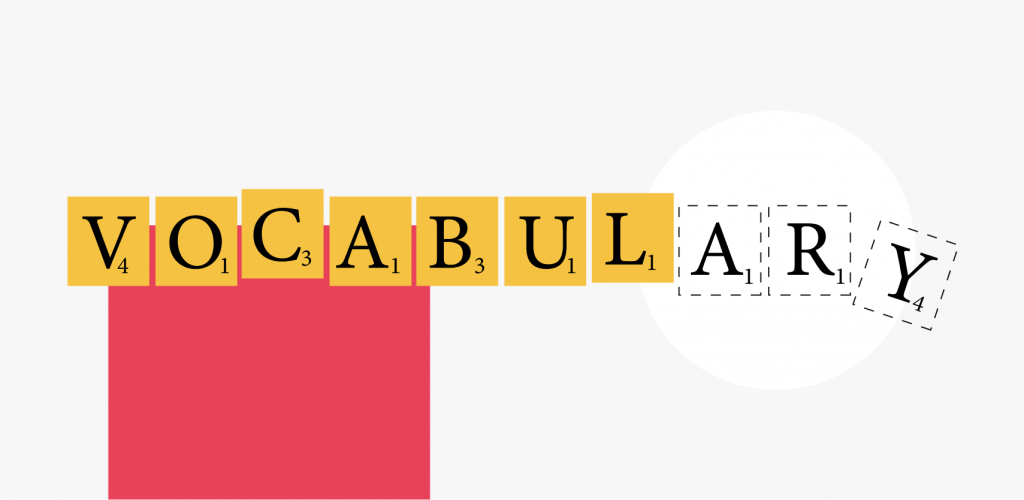
Some of these words have more than one definition/application. So, for specificity relative to the nature of this piece, we’ll focus on the usages detailed below.
All-Over-Print (AOP) Cut & Sew T-shirt: These are premium-edition shirts tailored toward a more exacting customer base. Rather than traditional printing, where a shirt is assembled then printed, cut & sew tees have the fabric printed before the shirt is sewn together. This makes an all-over-print design wrap cleanly around, rather than having an awkward chop when a piece of fabric runs out. They have slightly longer production times, but their higher level of detail more than makes up for the wait.
Blank: These are non-branded products created by large suppliers. They don’t have any artwork on them because they’re destined for customization through the print-on-demand business model. While blanks are produced by large-scale brands, they don’t contain any marks or identifiers.
Catalog: This is a gathering of print on demand products into one location. Within a catalog, users can select a given product for customization, inclusion in their stores, and sales to customers.
Dropshipping: This is a modern adaptation to business supply chains. Instead of buying goods to sell to customers, you wait for customers to order a product, then pay to have that pre-sold product made/shipped.
Direct-to-Garment (DTG) Printing: This is one method of applying a merchant’s designs onto a shirt. This is similar to traditional printing on paper, except certain modifications have been made so the process utilized shirts rather than paper.
eCommerce: This is business online. Any electronic transference of funds, products, services, etc., over the internet qualifies.
Embroidery: This is the decoration of fabric with needle and thread (yarn), rather than using dyes, prints, etc., to apply a design.
Fulfillment: This is a term used to describe the amount of time it takes for a product to go through creation, shipping, and onward to a customer’s possession.
Integration: This is a bit of tech-wizardry that enables different electronic entities to connect, operate together, and conduct business. For example, Printify has its own structure that uses integrations to connect to other digital bodies like eBay, Wix, WooCommerce, Etsy, Shopify, etc.
Merch (Merchandise): This is a fancy word for the goods, products, or items a merchant sells. These often, but not always, have a similar theme (think branding) to them. These pieces usually play a role in promoting sales.
Merchant (Vendor): This is you (probably). Here, merchants are people that leverage the virtually limitless potential of print-on-demand dropshipping to start an income stream.
Mockup: This is a digital manifestation of a product you’ve created. It’s like the blueprint that a real-life print provider uses to build a print-on-demand drop shipped product.
Mockup Generator: This is the engine used by prospective vendors as they build new merchandise for their digital store(s).
Printify: A print-on-demand dropshipping company dedicated to facilitating merchant success.
Printing Area: When a product is selected in a mockup generator, that item will have a detailed location for the inclusion of designs, artwork, words, etc. When a merchant puts their art in this printing area, they can then sell that unique product for profit.
Print on Demand: This is a business model whereby products are created only after they’ve been ordered/purchased by a customer. These funds coming from that customer are then used to create the necessary product(s).
Print Provider: These are enterprises that specialize in mass-producing printed garments. When a merchant’s POD order comes in, they supply the blank base product, apply the requisitioning merchant’s design to the designated printing area, then send the finished product along to the end customer.
Production Time: This is a measurement of how long it takes for a product to be selected, printed, and checked by quality control. There is an estimate given for this period, but there can be extenuating circumstances that affect the timeline.
Screen Printing: This is a garment printing method whereby a screen is used to apply various shades of paint. Each screen can only hold one color. So, multiple screens are used for designs with multiple colors.
1. The T-Shirt
It’s far more than a simple cloth covering for the upper torso and arms. T-shirts are a classic that quite literally cannot go out of style. They’ve long since become a universal truth in the world of contemporary fashion. The underlying concept has been a fundamental (both literally and figuratively) part of everyday dress since the early 1800s – and way further beyond if rough predecessors like tunics, jerkins, etc., are considered.
However, the once humble shirt has evolved into quite a few modern manifestations. From the way that a neckline comes together to designs covering various areas, these versatile garments have long-since enmeshed themselves with just about every other clothing option into the commonality observable today.

2. History
A classic rebranding story, the origin of the common t-shirt is fairly similar in structure to Joseph Cambell’s The Hero’s Journey plot structure; an inauspicious beginning encountering a transitional period, evolving into a climactic surge, slowing to stabilization, then returning to n to begin the cycle anew – influenced by a number of interesting characters, developments, and entities along the way.
In short, the t-shirt began as a sweat rag, literally. This base coat was used as the barrier between the inherent grossness of pre-shower humanity and their nice, expensive outer garments. It was basically underwear for the upper body – specifically the trouble areas like armpits, middle chest, and that line of the back where perspiration builds quickly.
Like the majority of industrial progress, the impetus behind the creation of the first t-shirt was military – the Mexican-American war of 1898. The purpose was to prevent our boy’s uniforms from getting nasty from the inside out. Soon after (1913), United States sailors were outfitted with standard-issue t-shirts to protect their soldierly attire. But, working on/in ships gets hot – especially back when safety and labor standards were different. To combat the heat of the invisible enemy, the enlisted men began stripping down to the base layer – especially during summer months. While this action was initially met with resistance from the officer class, the avoidance of heatstroke gradually became mainstream within the armed forces.
Written by the American icon F. Scott Fitzgerald (The Great Gatsby, Tender is the Night, The Love of the Last Tycoon, etc.), this work was the very first time that the word “T-shirt” was first used to describe the t-shirt. This verbalization was probably included due to the ‘T’ shape of the garments fabric lining. T-shirts continued to largely remain a sweat-saving secret for veterans. The Myriam Webster dictionary officially incorporated the word shortly after the book’s publishing in 1920.
The first actualization of what is considered to be the modern-day t-shirt was created by Jockey International Inc. in 1938 for the University of Southern California football team (Trojans). The idea was to create a cheap undergarment for reducing chafing, absorbing sweat, and preventing shoulder pads from rubbing.
In ‘48, presidential hopeful Thomas E. Dewey tried to boost his fellowship with a t-shirt featuring the now-famous “Dew-it with Dewey” slogan splayed across the front. Unfortunately for him, he ran against Harry S. Truman (the incumbent Vice-President turned President after FDR died in office in 1945). Truman ended up winning the election, despite losing both Southern Democrat support (for supporting the civil rights movement) and Republican support (for his soft stance on communism) respectively.
During the ‘50s, films were a much bigger deal than today. As such, the release of two massive blockbusters (A Streetcar Named Desire in 1950 and Rebel Without a Cause in 1955), starring handsome Hollywood men in what was considered to be underwear, resulted in a swift normalization of the act. Furthermore, the propagandized image of a t-shirt became synonymous with rebellion – effective metaphysical material for the impressionable masses.
Good job learning this. Keep reading more to learn about t-shirt fits and styles!
Choosing a t-shirt fit, style, sleeves, and more
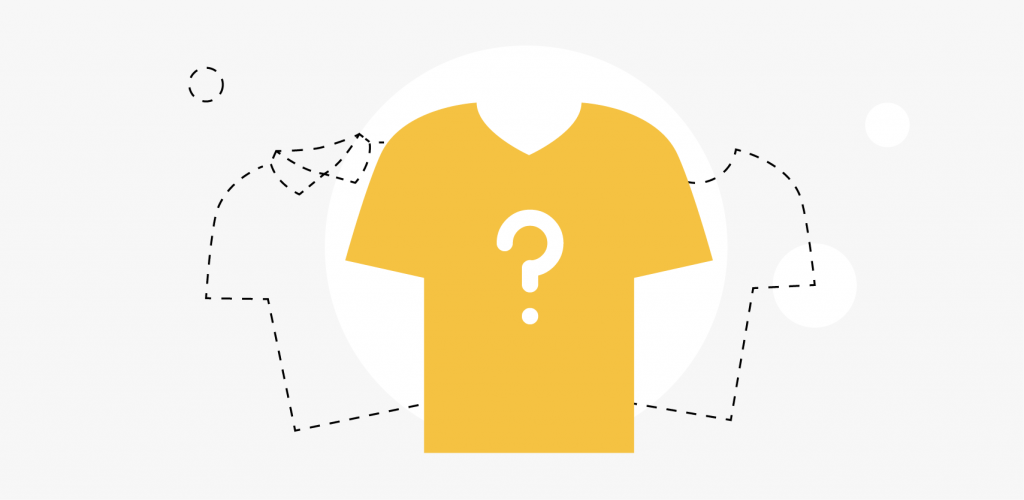
When it comes to making corporeal decisions about shirt selection, there are a few clearly defined areas to keep in mind. Now, if there’s a direction that you absolutely must go in, best of luck to you. However, it may be best to stick to styles with a broader, more researched appeal.
With all the t-shirt variations out there, these are some good guidelines to consider. Please be aware that there may be some overlap in the explanations below, as these categories detail similar characteristics and fields.
1. Neckline: Just like the number of styles out there, this feature is central to cultivating a particular look. Even if the other facets of a particular garment are ideally situated relative to a particular body, getting a neckline wrong can be a deal-breaker.
2. Style: Instead of this meaning the shirt has a look fitted, tailored even, to a specific person’s body, it more means how the basic shaping of the garment drapes around the body. The garment shouldn’t result in impingements, discomforts, or restrictions in locations like the arms, shoulders, chest, or back. However, the fit can be highly subjective – as there are many styles that can call for a tighter or baggier placing.
3. Sleeve: The name for the cloth covering over the arms of a garment, sleeves come in all shapes and sizes. Depending on the particulars of a given person’s body (shoulder width, arm length, etc.) affect the overall look of a garment, this aspect is crucial.
4. Fit: What activities does a shirt allow the wearer to participate in? For example, depending on a shirt’s particulars, an occupant’s dress suitable for a sporting event might not feel comfortable dressed similarly during business casual work hours. The function of the shirt is key.
5. Fabric: The composition of a shirt is arguably the foremost factor in shirt selection for both print-on-demand merchants and their customers. If Something looks amazing, but is uncomfortable to wear – too tight, itchy, scratchy, nonfunctional, etc., they won’t get much traction with customers.
6. Dimensions: As different shirts are meant for different occasions, activities, seasons, etc., how heavy, thick, and weighty a particular fabric is makes a huge impact on when, where, and how it can be worn.
1. Neckline

Just like the other prominent aspects of the t-shirt, a fairly diverse array of necklines have emerged. These aesthetic twists can make all the difference in product selection, as they make a prominent impact as to how wearers and customers are seen.
- Crew Neckline : A universal standard, the circular opening for the neck and head of this classically inclined tee has reached a remarkably high level of prevalence. By now, all closets have at least a few.
- V Neckline : This name implies that the seam of the collar comes down into a V shape down the front. The cut is generally recommended for those with round faces and broad shoulders. The V-taper also allows a v-neck shirt to be worn as an undershirt for a buttoned shirt with a few undone.
- Y (Henley) Neckline : Somewhere between the crew neck and the V neck, the Y neck is like a crew, but with buttons going down the front a few inches.
- Polo : The idea of a t-shirt with a fold-down collar was first popularized by golfers before spreading to the population at large.
- Scoop Neckline : With a very wide, ovular window for the head, this cut allows for a fair degree of skin visible through the extra-large opening.
- Hooded : This variation builds from the traditional crew-neck cut, but extends the edges upward and together into a hood. This addition has almost become more of a style feature than for fighting the cold – hoods even appear on tank tops nowadays.
2. Style
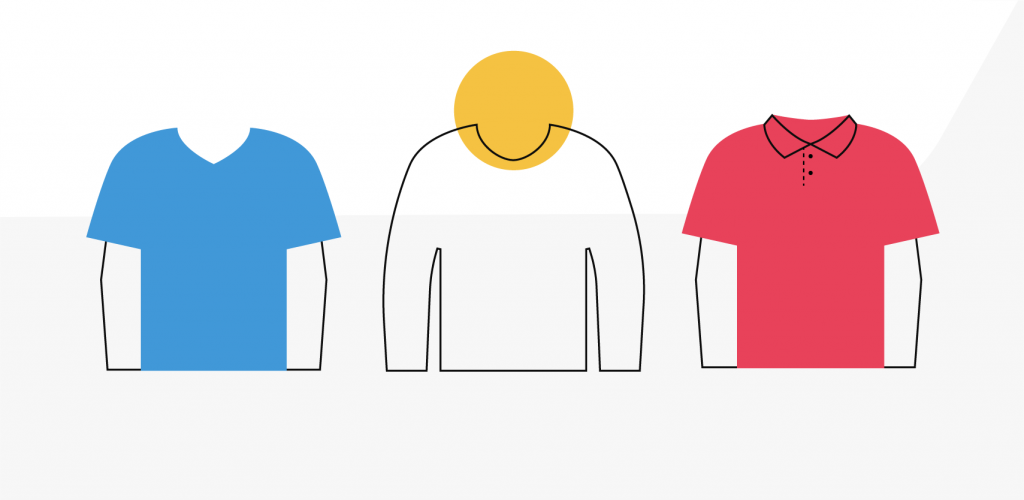
While the position of the t-shirt is well entrenched in the conventional wardrobe, there’s still a great deal of variation within the genre. Here are just a few examples of the many t-shirt models available on the market today.
- Basic Half-Sleeve : A forerunner among the t-shirt class, this staple is original, classic, and timeless. Arguably the most popular model amongst the many here, this unisex design applies to every demographic – regardless of orientation, gender, size, age, etc. The practicality and universal appeal of this design make it a more than worthy contender for any POD merchant’s store lineup.
- Long-Sleeve Crewneck : This is a basic half-sleeve tee with the addition of longer sleeves. These make ideal layering opportunities in addition to providing a bit more warmth.
- Polo : The addition of a simple collar turns an otherwise casual garment into a slightly more formal version. As such, this inclusion can open doors, both literally and figuratively. This adaptation was widely popularized through golf before moving to its current place as a fashion staple.
- V-Neck : Sometimes called a football jersey, this tee inclusion applies a ‘v’ taper from the neck downward, rather than ovular or circular. This cutting provides a nice centering between the shoulders and chin.
- Wide-Neck (Off-Shoulder) : Predominantly preferred by women, this wide-collar shirt is designed to surround the tops of the shoulders, rather than the neck.
- Yoke-Neck tee : Sticking with the concept of a collar, these shirts often include some kind of patterned accentuation around the neck area.
- Boyfriend tee : These are looser-fit tees often marketed to women relative to the more common form-hugging models.
- Scoop-neck (douchebag) tee : This is a spin-off from a women’s wide-neck tee and adapted to a more masculine build. The extra-deep neckline displays more of the chest than a simple v – ideal for the more fashion-forward.
- Henley-collar tee : This takes the classic crew-neck tee, but takes the collar and adds a bit of a thicker neckline which leads a few inches down the front.
- Raglan-sleeve tee (¾ sleeve) : These are t-shirts with a specific sleeve type sewn directly in a line directly to the collar, covering the front of the shoulder and traps rather than functioning like the ‘normal’ sleeves attached around the shoulder. This layout results in a phenomenal range of motion. If the coloring is consistent between the two pieces of fabric, this seam can be difficult to see.
- Baseball tee : Very similar to the Raglan-sleeve tee, but with a more pronounced coloring scheme, this model was favored by baseball players taking advantage of the extra range in their sporting pursuits. The diagonal sewing pattern of the sleeves is now commonly associated with this popular design.
- Turtle-neck tee : Take a standard-issue t-shirt, then add the first few inches of a hood completed all the way around the collar. This extension can be loose or hug the neck closely. Either way, it’s an interesting choice for a base layer popular in cold or windy areas.
- Ringer tee : From the base of a crewneck tee, surround both the collar and the sleeves with a solid line. This inclusion is often a stark black (but it can be any other color) to serve as a contrast with the white base – whatever color the base happens to be.
- Cap-sleeve tee : This model has the sleeves largely removed except for a small capping over the tops of the shoulders. This puts significant emphasis on the arms – ideal for women or men wishing to draw attention to that area. Furthermore, the tight fit in the chest and stomach means these items are traditionally worn by models, gym-rats, meatheads, and barbell bunnies.
- Half tee : Sometimes referred to as a singlet by athletes – particularly runners – these loose-fitting garments are incredibly comfortable while providing excellent heat release.
- Muscle tee : Exactly what its name promises, the muscle tee is a tight-fitting, sleeveless tee designed to showcase whatever it’s worn over.
- Half-muscle tee : Take the muscle tee, and cut it in half. This model is the epitome of self-confidence – a firm display of one’s midsection under a tight, revealing shirt.
- Longline tee : This variation takes an otherwise ordinary shirt but increases the overall length past the normal hip zone. This can vary from a slight extension to hanging somewhere near the knees. Depending on who’s wearing it, this garment can contribute to an earthy, casual, or avant-garde style.
- Pocket tee : A tee with a pocket on the side just seems a bit better than a classic. It adds an uncomplicated measure of formality without staying from casual roots. Yes, the odds of actually putting anything in the pocket are low. Furthermore, the pocket can be a different color, pattern, or accent piece to add a bit of an edge.
- Babydoll tee : A throwback to the 1990s, this is a tighter fitted shirt that’s often cut shorter along the midriff or has a more dress-like lower portion. These come in both long-sleeve and short-sleeve variations.
3. Sleeve
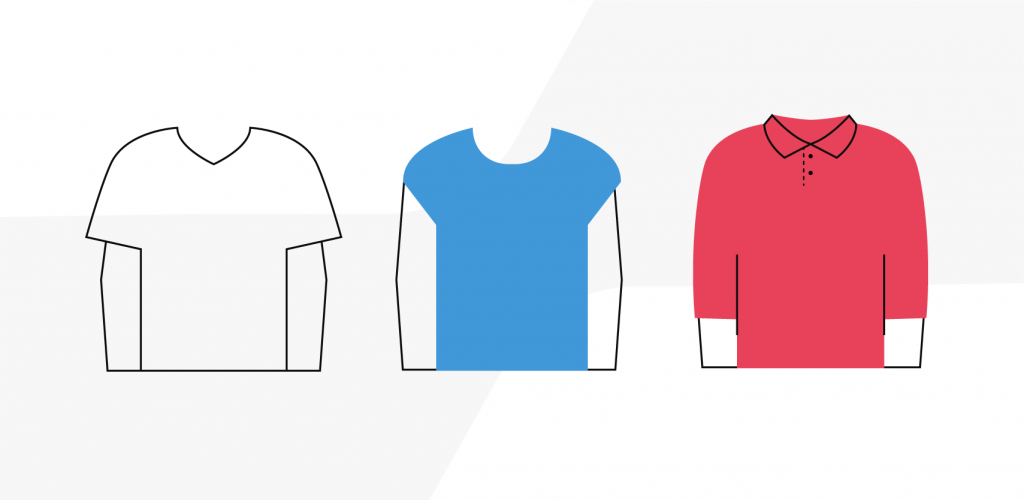
No different from any other aspect of a given t-shirt being measured for inclusion in a POD shop, a garment’s sleeves can drastically affect how a customer views a product. Everyone has a look that they gravitate to; it’s tapping into that positive inclination is the key to making sales.
- Sleeveless : Otherwise known as a tank top or cutoff, losing the sleeves entirely takes the standard-issue t-shirt and opens things up drastically. The loss of all that restrictive fabric under and around the arms allows for a supreme range of motion while allowing for unparalleled heat dispersion. Favored by athletes and gym-goers, the sleeveless t-shirt is a staple among the active population.
- Cap Sleeve : Popular amongst women and men who frequently skip leg day, this adaptation removes most of a ‘regular’ sleeve except for a small covering around the shoulders. This ‘capping’ effect brings more attention to the shoulders and upper arm.
- Regular (Half) Sleeve : The most common of all sleeve types, the regular sleeve usually falls to around halfway down the upper arm. However, this does change relative to the size and shape of the wearer. For example, an individual competing in strongman events will likely experience their shirtsleeves rising due to increased mass along the arms.
- Raglan Sleeve : Usually, but not always, having a longer sleeve than the regular sleeve, these shirts are known for the Raglan cut. This is a design whereby the shirt sleeves are connected to the shirt with a diagonal seam instead of the traditional vertical. This feature opens up the underarm of the shirt – providing an improved range of motion relative to the regular sleeve.
- Long Sleeve and ¾ Sleeve : This simply refers to the length that a sleeve runs down the arm. The long-sleeve designation indicates that the fabric around the arms proceeds to the wrist or a bit further. The ¾ sleeve usually falls to around the middle of the forearm.
4. Fit
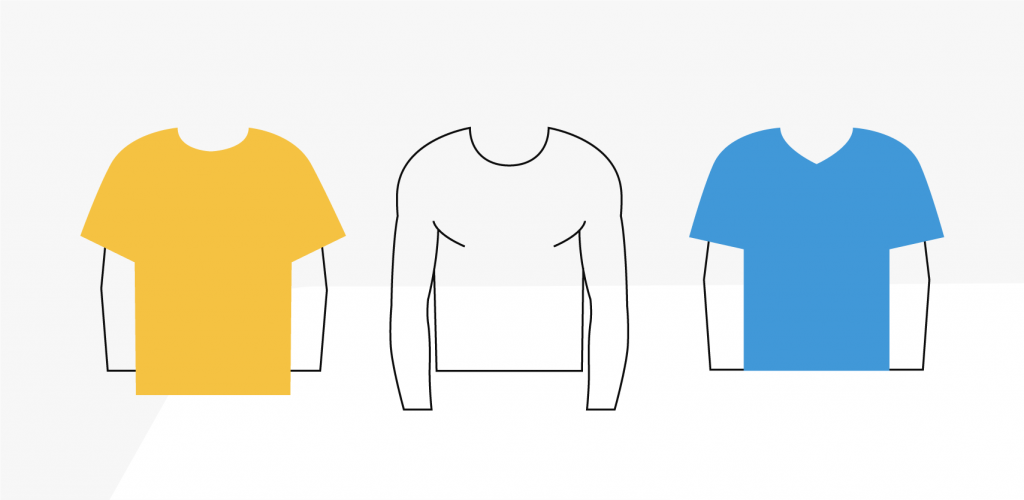
There’s quite a disparity in the attire requirements for lounging at home against venturing out into the world. Furthermore, even beyond matters of functionality, the fitting of certain kinds of shirt fittings flatter a varying scope of body types. These differences make all the difference to customers seeking a particular product.
- Baggy : The picture that comes to mind at the word ‘baggy’ is probably an example of oversized clothing, rather than true baggy. This is a crucial difference. The baggy fit drapes over the shoulders with a larger space for the head and arms rather than a conventional fitting.
- Muscle : While this classification is a bit more prominent amongst women, a large demand for muscle shirt variations is presented by gym-bros. These shirts essentially wrap the body in a skin-suit of a different color. They’re the tightest manifestation of the tee; the ultimate expression of muscles that simply can’t be contained within the framework of a ‘conventional’ shirt.
- Regular : There’s an argument to be made that these are the best fit for a budding POD merchant. The universal appeal and practicality of these items make them fit just about any customer niche. As this is the most common, it’s worth mentioning that there are the most options (colors, sizes, models, etc.) within this genre.
- Slim : This fit wraps around the body tightly, but not as much as the muscle tee. When utilized correctly, this style is phenomenal for displaying the efforts of a disciplined workout routine. However, it’s important to consider the exact fitting, as excessive tightness or an imbalance in fabric distribution can lead to discomfort, impingement, or an uneven look.
5. Common fabrics used to make t-shirts
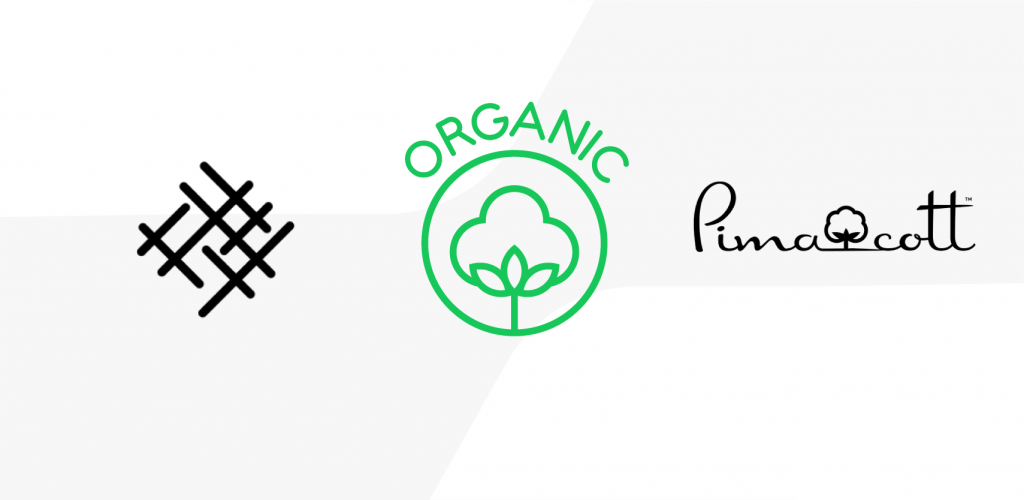
A shirt must feel good. If there’s a shirt (brand, style, etc.) that makes someone feel comfortable, then there’s a big pull to wear it. There’s simply no substitute for something that a customer actually wants to come into contact with. As such, the constitution of your t-shirts warrants some attention.
The composition of a garment also plays a huge role in determining just how long a shirt will last. Here are a few quality fabrics that can make sure that a particular shirt type is comfortable, durable, and acts as a good printing surface.
Natural vs. synthetic
As a simple explanation, natural fabrics are derived from naturally occurring substances, whereas synthetics are man-made and require chemical assistance.
From there, it’s up to the merchant to decide on what characteristics are necessary for their products. Depending on what demographics are targeted, the demand will vary. If your customer base is a largely eco-friendly crowd, then a synthetic lineup probably wouldn’t go as far as a more organically manifested approach.
On the other hand, synthetics are largely built for performance. So, if the function is the pressing concern, then petroleum and blends are the way to go. Afterall, synthetics are designed to surpass their natural counterparts; they’re strong, comfortable, elastic, and retain shape well.
Cotton
This is one of the most common fabrics utilized around the world for t-shirt printing. The use of cotton is so prevalent due to the material’s widespread availability, comfort, breathability, and softness. Regarding absorbency, cotton can hold roughly 25% of its weight in water.
In the print-on-demand world, cotton is also a big deal due to how well ink sets into the fibers. In other words, cotton makes for a great printing surface.
Shrinkage : Most cotton products are preshrunk. This means that a machine has compressed the spaces between the fibers of the garment together. However, this doesn’t mean that a shirt won’t experience any shrinkage over time. It’s perfectly normal for a cotton garment to experience an often unnoticed 3-7% shrinkage in overall size throughout the life of a given shirt.
Combed cotton
This is high-quality, super soft stuff. When ordinary cotton fiber is made, the cotton is gathered, cleaned of debris (like dirt, seeds, other plant matter, etc.), then carded. The carding process takes the random growth of the cotton and lines up the fibers so they can be spun into thread or wool.
From there, the combing process uses a series of special brushes to further refine a given batch of cotton. This combing takes out roughly 15% of a given bach’s volume – removing impurities like dirt, seeds, and fibers that are weak, short, or don’t line up with the rest of the threading. Those shorter threads are the ones that tend to poke out of shirts, causing prickling, itching, or a less than comfortable feel.
With all contaminations and substandard materials removed, combed cotton is a premier material to work with. It’s stronger, feels better, and is less likely to unravel or fray than carded open-end cotton. However, it does tend to be more expensive.
Organic cotton
While most people are familiar with the concept of organic food, other versions of organic products still confuse many. After all, no one eats cotton. However, there are multiple, real-world reasons to utilize organic cotton relative to cheaper counterparts.
The unregulated cotton industry is one of the most chemical-intensive in the world. First, any prospective ground is cleared using fungicides, pesticides, and other predatory practices. Then synthetic fertilizers, pesticides, toxic wastes, chemicals, heavy metals, and sequences of other hazardous materials are all pumped in to boost yields, refine, whiten, finish, dye, and print. Worse still, these practices poison field workers, damage the environment as a whole, and are arguable sources of child/forced labor. All these things are direct violations of fair trade regulations.
So, while organic cotton may run a bit more than the generic option, this act is a statement in favor of both the environment and human rights. While underground production is a problem, the choice to support sustainable, eco-friendly practices is one that many customer bases identify with. In fact, many people are more than willing to pay more for items they know didn’t result in human or environmental crimes.
An easy way to sum it up is that organic cotton is grown in a way that doesn’t negatively impact the earth.
Pima/Egyptian cotton
This is the highest grade cotton available today. What we all know of as cotton is actually a spread of three different species. By far the most common of the three is Upland cotton, composing near 90% of all production around the world. From there, it’s a split between Pima and Egyptian.
The two less frequent are simply better than the Upland variety. They naturally grow in longer, silkier fibers (also called staples). When used as the raw material for cotton production, the result is a final product far superior to Upland cotton. The use of Pima (or Egyptian) makes an amazingly soft fabric that is also strong – no fading, wrinkling, pilling, fraying, or tearing. As such, they have been officially classified as being “extra-long-staple cotton”
Ironically, Pima and Egyptian cotton come from the genus Gossypium and the family Barbadense relative to Gossypium Malvaceae for Upland Cotton. So, the only real difference lies in the geographic location. Designation Pima flourishes in the United States and Peru while Egyptian cotton grows in, you guessed it, the heat of northeastern Africa combined with the Nile River Delta. It’s also taken root big time throughout India and China.
Supima Cotton : This is basically a certification, rather than a new kind of cotton. Right now, Egyptian and Pima cotton are worth far more than Upland cotton. So, what many distributors do is cut their product with inferior materials while still charging premium prices. Unfortunately, this means that many products with a 100% Egyptian (or Pima) cotton label aren’t 100% at all. Supima solves this mess because the fabric has been authenticated by a third party dedicated to maintaining certain standards.
Slub cotton
This designation describes a type of fabric made with small knots and knobbles – easily viewable imperfections in the surface area of a garment. But, these small raised areas of threading have actually become a desirable feature – particularly among the avant-garde fashion scene.
The elevated areas of the shirt’s surface are made during the process of weaving the cotton into thread. As the threads of cotton are twisted into yarn, small lumps form due to irregularities in the twisting. Because the surface is not meant to fall flat when worn, slub garments never need to be ironed – bonus.
Slub was universal back in the days of handspun cotton or linen garments. But now, with the use of machines, these raised bits are able to be straightened out, or included, depending on a manufacturer’s wishes.
Linen
Created from the fibers of the flax plant (Linum Linaceae), linen is prevalent in textile manufacture throughout the world. Flax is difficult to weave in its natural state, so the fibers are extracted from the plant and held in storage – letting them gradually soften over long periods of time. Currently, the term “linens” and “linen closet” are used fairly often to refer to fabrics – even if the items being referred to aren’t made from linen.
Linen is renowned for its durability, strength, and longevity. This is primarily due to the fact that the cellulose fibers are longer and tighter than those of cotton yarn. When it comes to softness, linen often needs a few washes to get rid of a router feel. However, once this process is complete, the fabric becomes very soft and lightweight.
The rougher, textured patterning of linen makes for great breathability. Linen can also hold up to 20% of its weight in water. The water-wicking ability of linen is legendary, as the fabric is able to draw moisture (or sweat) away from the skin for evaporation. This effect also makes it a good choice for hotter months, as linen fibers have gaps that allow heat to dissipate.
It’s also known for its hypoallergenic properties. The lower thread count combined with a slightly looser weave traps less dust, dirt, and other particles.
Polyester
Polyester is a blanket term for any fabric derived from petroleum. First synthesized by the English as Terylene in 1926, Americans mass-produced this durable synthetic fabric for war needs throughout WWII. After the fighting ended, companies needed to keep the machines running to turn a profit, enter polyester clothing.
Now, it’s one of the world’s most popular fabrics – utilized throughout thousands of industries and applications. China, Taiwan, Japan, Indonesia, India, and Korea are all major producers – with smaller manufacturing occurring in the United States.
This prevalence is largely due to how cheap the material is to make relative to an impressive amount of durability, ability to hold printed designs well, and quick-dry capabilities. While some garments go 100% polyester, it’s also very common for other fabrics to be blended in.
There are three types of polyester: Ethylene Polyester, Plant-Based Polyester, and PCDT Polyester.
- Ethylene Polyester : More commonly known as PET, this is easily the most popular form of Polyester. When people talk about polyester, they’re usually referring to PET.
- Plant-Based Polyester : This is a biodegradable alternate option to the cheaper, more conventional Ethylene Polyester. While having clear environmental benefits, this derivative is less durable and costs significantly more to create than PET or PCDT.
- PCDT Polyester : This fabric is far more elastic than regular Ethylene Polyester. This makes it a perfect fit for certain situations. As the durability is also increased dramatically, this fabric is preferred for situations requiring thicker, stronger fabrics – like drapes, curtains, or upholstery.
Consequences : Unfortunately for shirts composed of or including polyester, virtually every stage of the polyester lifecycles has a negative, lasting impact. Fossil fuels serve as raw material, itself an issue compounded by the inefficient, wasteful methods used to extract it. Then, oil refineries break down that complex, dense matter into its respective components. These are reconfigured into whatever the engineers, scientists, or politicians want. These refinement and processing stages each produce dangerous synthetic byproducts – similar to many of the other large-scale industries modern civilization depends on.
Poly-cotton
A split between cotton and polyester is a pretty common sight these days. The most popular ratio for casual wear is 50/50 while athletics and athleisure gravitate toward a weighted 65/35. As cotton is a more spacious fabric (space between the fibers), the polyester can be interwoven cleanly. It makes sense, as this combines the best aspects of both the natural and synthetic worlds into a superior hybrid.
Cotton isn’t the most durable fabric. While it is breathable, the material wears out and rips much more easily than when bolstered with polyester. For this reason, 100% cotton garments need a bit more care over their lifetimes than a blend. A good example of this is ironing – polyester keeps things wrinkle-free. As such, these combinations can handle more washes without fading or losing their feel.
On its own, polyester isn’t a very breathable fabric. Things can get sweaty and material has a habit of sticking to the skin. Furthermore, a pure polyester garment is very prone to generating static electricity. While not directly harmful, this can be annoying when it makes hair misbehave or zaps people.
These (and other) reasons have made the poly-cotton pretty popular outside of ultra high-fashion environments. The polyester provides strength and wrinkle resistance relative to cotton’s lightness, hypoallergenic qualities, and moisture absorption.
Chief-Value Cotton (CVC) : This label is seen for blends that have more cotton than another fabric – usually, but not always, polyester.
Rayon
The actual properties of the fabric are as strange as its designation as a ‘semi-synthetic’ material. Rayon has the ability to take on the properties of many other textiles, including cotton, wool, silk, etc. This universality has made it a prime candidate for inclusion with just about any other fabric – which is fairly common.
Rayon is a blanket term for any synthetic or semi-synthetic fiber made from cellulose. Anyway, it was invented to replace silk, and as a result, it’s sometimes called artificial silk. It’s currently the most popular fabric for women’s clothing, largely responsible for clothing that has a flowy vibe to it. Imagine a flag. That wafting of the fabric through the air is the idea – but for clothing.
Rayon is made from the mechanical pulping of cellulose from wood pulp or cotton. Then, the mash is treated and liquified using chemical solutions. That soup is then extruded (forced through) the very small holes of a metal device called a spinneret. This produces fine threading that is washed in a chemical bath. Strengthened by this dip, the fibers proceed to a finishing process that spins them into yarn. Ultimately, production is a chemistry-rich process that starts with natural components – explains the semi-synthetic classification.
Tri-Blend
This concept is most often a combination of cotton, polyester, and rayon. However, other combinations of three or more are out there. Essentially, these are the result of a deeper examination of the pros and cons of each fabric type. By including the best aspects of each contributor, the result is a final product far beyond the limitations of other fabrics. Odds are, these are the most expensive. But, premium items go for premium prices, so it’s really all up to merchants to weigh the merit for themselves.
6. Dimensions
It’s no fun to wear a super-thick t-shirt during a summer heatwave or a light covering during an event with some wind chill. Odds are, we’ve all experienced a bit of a wardrobe malfunction at some point that could’ve been eased by stripping down or jacketing up. For these (and other) reasons, the geographic location is a critical factor in determining whether a particular t-shirt sells. Weight also plays a role in wrinkling and if a shirt appears sheer or opaque.
Metrics: Inches (“), ounces (oz), and grams per square meter (gsm) are used for measuring respective dimensions.
Fabric thickness
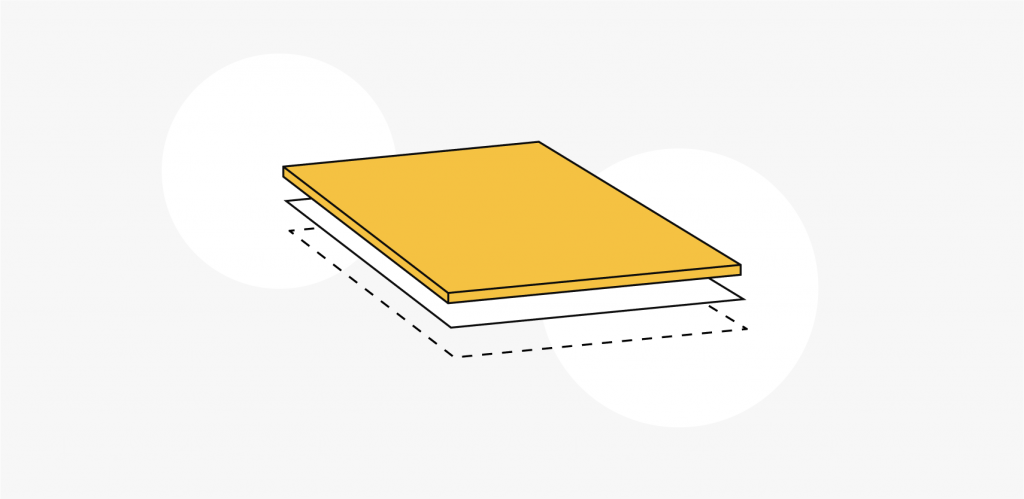
In addition to the composition of the fabric making a significant difference when it comes to how a shirt performs, it’s also a critical factor to how much fabric is involved in the construction of a shirt. Here are a few of the more common fabric thicknesses.
Not all shirts may perfectly conform to the examples included herein.
- Super Light : The lightest and most breathable option on the market, superlight t-shirts usually fall between 0.006” – 0.007” in thickness. This incredibly narrow barrier means that many of these garments are partially see-through. However, this transparency effect diminishes somewhat with darker colors. Due to the thinness of the fabric, they do tend to wrinkle more. However, that slender threshold makes for incredible breathability during hotter weather. The silky feel to a super light is a pleasure to encounter, but a vulnerability to tearing comes with that richness.
- Light : With a bit more heft than the super lightweight variation, the light version is more of an all-year-’round piece. It can serve as an undershirt to protect outerwear while not resulting in the rapid overheating that thicker shirts can contribute to. As they are still relatively thin, wrinkling can occur. However, there are wrinkle-free and iron-free manifestations widely available. These are prevalent throughout relaxed-business to casual wear due to how they drape over the body. However, this tightness can be uncomfortable for customers wishing to hide unwanted curvature. This category traditionally stretches to 0.008” in fabric width. The weight here produces a soft, buttery feeling to the fabric – a significant reason why they’re purchased in stores. If someone likes the feel in their hands, the logical conclusion is it would feel even better against the body.
- Medium : This is a popular go-to for many t-shirt sellers. There’s no opacity except for a bit of show-through with whiter tees. The sturdier build of these fabrics means they’re fairly resistant to wrinkling. However, many non-iron options exist. While this category leans toward the more casual side, there are exceptions. Mediums often fall around 0.009”.
- Medium Heavy : Gravitating more toward simple outerwear proposed for a cool-to-windy day, the medium-heavy t-shirt is fairly warm due to their significantly higher thickness (0.010’ – 0.011”), relative to other styles. This version also moves up the ladder of wrinkle resistance from lighter fabrics. As a great many t-shirts are produced in this genre, it’s likely a few are still lingering in your closet. Their build makes them extremely durable. That longevity is a double-edged sword. If you like it, it’ll be there forever… But if you don’t, it’ll be a waste of closet space for the same time period.
- Heavy : Some of the thickest (0.012” – 0.014”) and heaviest shirts available, these garments are purposed for heavy weather and winter climates. They retain heat significantly better than their thinner counterparts. Flannels are often made from this type of material due to its durability, warmth, and styling.
- Super-Heavy : The weightiest of the bunch, the super-heavy (0.015”) is often seen as denim. Therefore, this material is very rare for a t-shirt. However, as all things are possible these days, maybe a denim t-shirt could become the next high-fashion standard.
Shirt weight

This is another critical metric for measuring the composition of a shirt. T-shirts are traditionally measured in ounces (oz). Now, using the example of a shirt measured at 5 oz, the shirt will actually weigh more than 5 oz when placed on a scale. This is because different shirts can have different weights. Therefore, it’s more accurate to measure the shirt’s fabric weight, rather than the finished product. So, for that same five-ounce shirt, the real measurement is five ounces per square yard. This practice makes scaling much easier, as the raw material can be used, rather than weighing each shirt for an average there.
- Light-Weight Shirts : These are all less than 5 ounces per square yard. Or in the metric system, below 170 grams per square meter.
- Medium-Weight Shirts : These are often somewhere around 5 ounces per square yard. Or in the metric system, about 170 grams per square meter.
- Heavyweight shirts : These are all 6 ounces per square yard or above. Or in the metric system, roughly 200 grams per square meter or more.
7. How to choose a t-shirt style
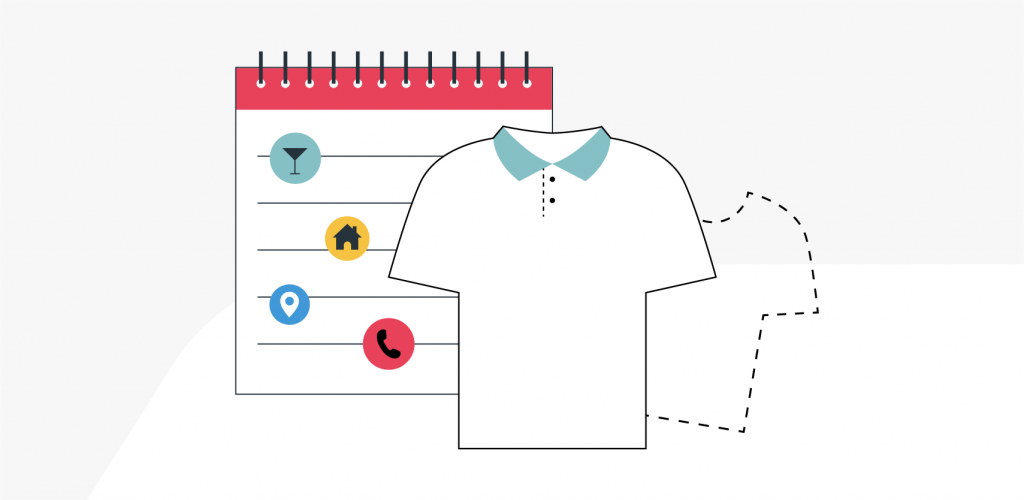
As ours is the age of athleisure, the t-shirt is a garment many people will live in. As they’re so prevalent, this means that finding that fitting is a big selling point for any POD merchants.
As we’re all experts in the court of our internal opinion, one of the best ways to discern the needs of customers is to analyze your own preferences. There’s probably at least a few favorite shirts in your wardrobe. Consider what makes them so valuable. The reasons are probably somewhere along fit, feel, design, fond memories, etc.
Tapping into a demographic’s needs, vibe, and energy is what makes t-shirts sell. It’s all about whatever the targets of a given product line resonate with. If you’re having some trouble thinking up how this could work, here are a few mellow examples of store angles to help get the creative juices flowing:
- Old-School Beach Vibe : First, slap some palm trees above gentle lapping waves with a drizzle of psychedelic coloring for your design. The beach crowd is usually pretty crunchy, so consider the eco-implications of the blank’s shirt’s sourcing, labor, etc. Lastly, wrap everything up with a model that’s light and breezy. Now, that’s a shirt that could appear above some board shorts or bikini bottoms.
- Sports Events : Design here may be a little trickier. Most sports teams, mascots, etc., and other notable figures are considered intellectual property. So, this means you can’t make money from copying someone else’s stuff. Instead, focus on aspects of the game, messages, and color schemes that your audience can connect with. Then distribution and trending factors are key. If a team is hot, and you can score a few sales by slipping under the pricing radar, maybe a cheaper build is best. However, people are more likely to wear a garment more often if it is of higher quality.
- Social Justice : What do you stand for? The beauty of this ultra-accessible medium is it gives anyone with an opinion a platform to showcase it. If a shirt is destined for the crucible of front-line demonstration, a cheaper, more replaceable base may be preferred. However, in staying aligned with the roots of the movement, the sustainability and human cost of garments should be factored in. Whether you’re speaking truth to power or pushing awareness of a particular subject, the social justice tee is on the rise.
- Everyday Ordinary : For those occupying the middle ground of the human bell curve, there’s a significant need. After all, the majority of the population (and therefore the entire market) falls here. These individuals gravitate toward models that incorporate a predominantly comfortable application. Make this niche happy by not pushing too hard in any given direction save casual. Use softer, medium-fit tees in more generalized colors that allow the individual to express a less extravagant attitude.
- Peacock : We’ve all seen them. After all, how could you not? This niche desires the exact opposite of the pigeons around them – they want to shine. Only the highest of quality fabrics coupled with bright, extravagant designs, and hard-hitting colors will do. Hit these high-rollers with a few products that quite literally cannot be missed and draw in a few whales.
Check out the t-shirt brand guide to keep rolling!
How to choose a t-shirt brand?
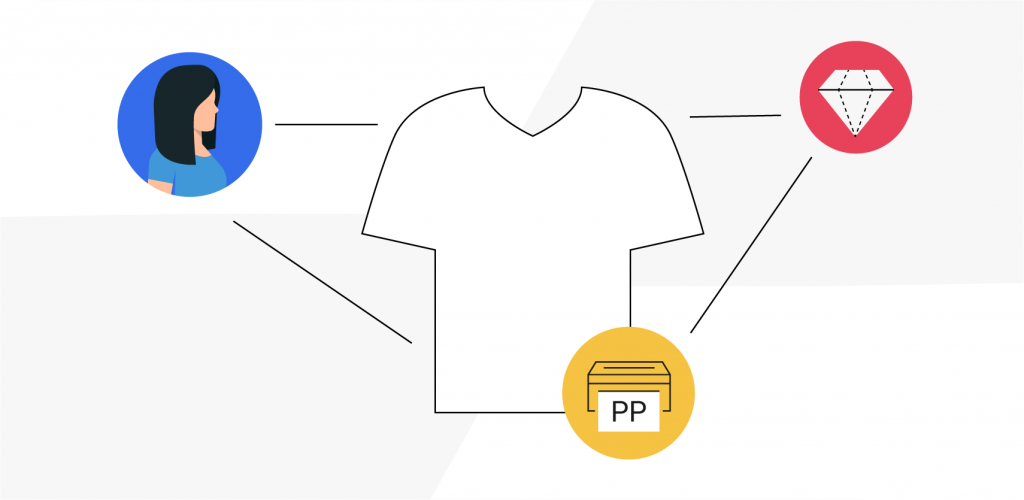
As a print-on-demand merchant, the ultimate goal is profiting from selling goods created through the connection of three players: the customer, print provider, and the brand. Each of these actors forms a critical component of the supply chain.
Various brands produce signature blank garments (shirts, in this case) in bulk. These brand items aren’t covered in logos, company messages, or designs like what many people imagine when they think of branded clothing. Instead, the shirt’s fitting, composition, color, and other specifics make that basic garment match the company identity.
These items are the raw material for print providers, who apply a printed design to the blank, turning the standard-issue garment into the unique creations of the selling merchant. Print providers are just that – a printing service. Once they’ve completed the coloring, dyeing, printing, etc., of a particular shirt, it is shipped to the purchasing customer.
As these entities are only activated when a POD sale is completed, it all really starts with the merchant. It’s their responsibility to conceptualize a final product that warrants a customer’s attention, desire, and cash. Fortunately, this whole process can be completed without any upfront investment from the merchant when they use platforms like Printify.
As we’re all well familiar with the role of the customer/consumer, let’s move on to brands.
1. What is a brand?
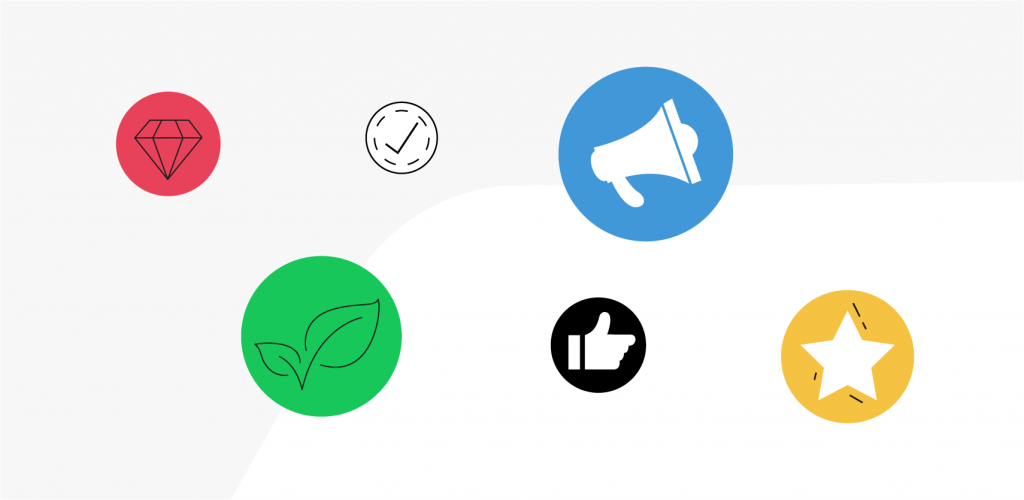
In broad (and slightly abstract) terms, a brand is a point where a mark becomes a symbol. It’s the way that people view a certain company, entity, being, or t-shirt, in this case. The world around us is littered with brands, each carrying their own distinct sense of meaning.
Even if someone has never experienced the products or services of a particular brand, it’s more than probable they already have an image built in their heads when it comes to the more common brands – either through interactions with others who have first-hand experience or from other influential, propagandistic forces like advertising and marketing campaigns.
What does the word ‘brand’ even mean? Well, within the framework of this document, that grouping of five letters is the personal identity of a prominent t-shirt. It’s a garment that people recognize due to its popularity, renown, characteristics, etc. Different brands can focus on different aspects to boost their recognition, pushing attributes like being eco-friendly, high fashion, high quality, being made of a certain material, contributing toward certain causes, etc. Virtually any angle can be fair game here.
As to all other aspects of contemporary life, this rule applies to t-shirts, too. So, it’s worth familiarizing yourself with a few of the more prevalent brands to see just a feel for the whys, whats, and hows of that branding’s placement.
2. Most popular t-shirt brands
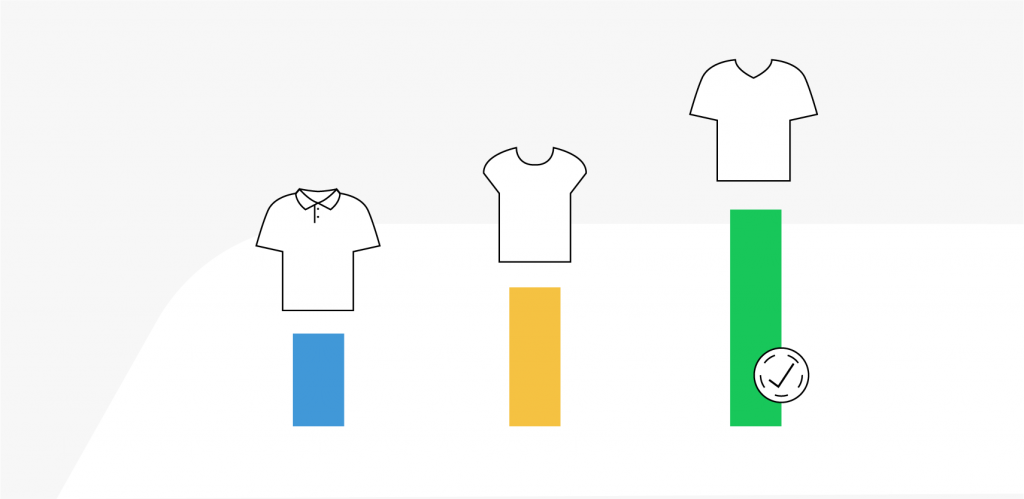
This is an excellent consideration for any print-on-demand merchant to think about when marketing products for a targeted audience niche. However, the structure of the question allows for a fair degree of uncertainty. After all, popular is a difficult concept to nail down. It quickly changes, evolves, or mutates into a new form, application, or perspective.
However, here are a few of the more popular brands out there – ones that the t-shirt industry is well familiar with by now. Some of these brands have split into two, joined others, purchased others, or even created their own sub-genres. It’s a vast world that would be difficult to contain in one document. Please be aware that this is not a comprehensive list or description, just some helpful information.
AS Colour
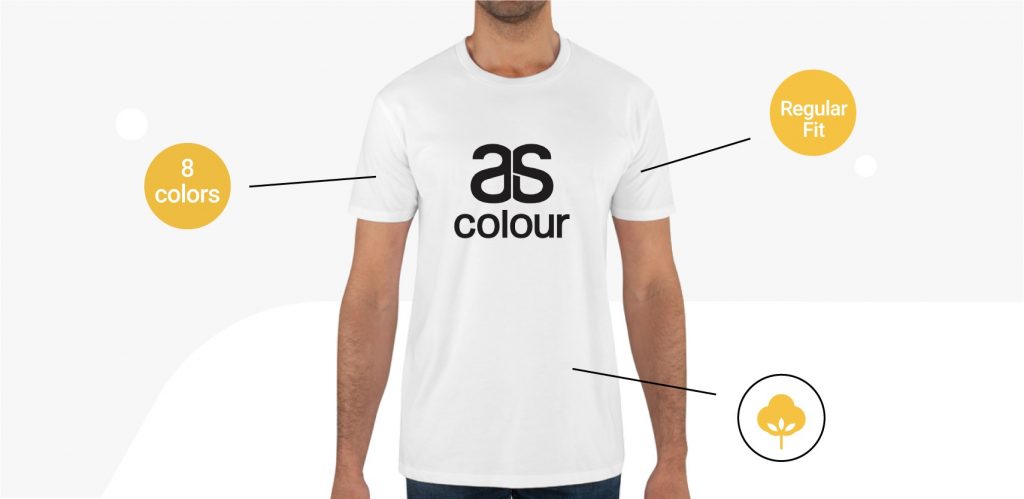
A company oriented by the principles of quality, respect, and simplicity, AS Colour is a company dedicated to providing shirts, singlets, sweatshirts, hoodies, jackets, etc. While sourced from Bangladesh and China, there are multiple checks in place to assure that all factories are inspected and abide by iron-clad codes of conduct. Along with their gravitation toward human-friendly practices, they also are committed to eliminating their role in creating single-use plastic waste and plastic in general. Lastly, sustainable sourcing practices ensure that these products come from environments that won’t inflict lasting harm.
Here’s the most popular shirt model by AS Colour:
Bella+Canvas
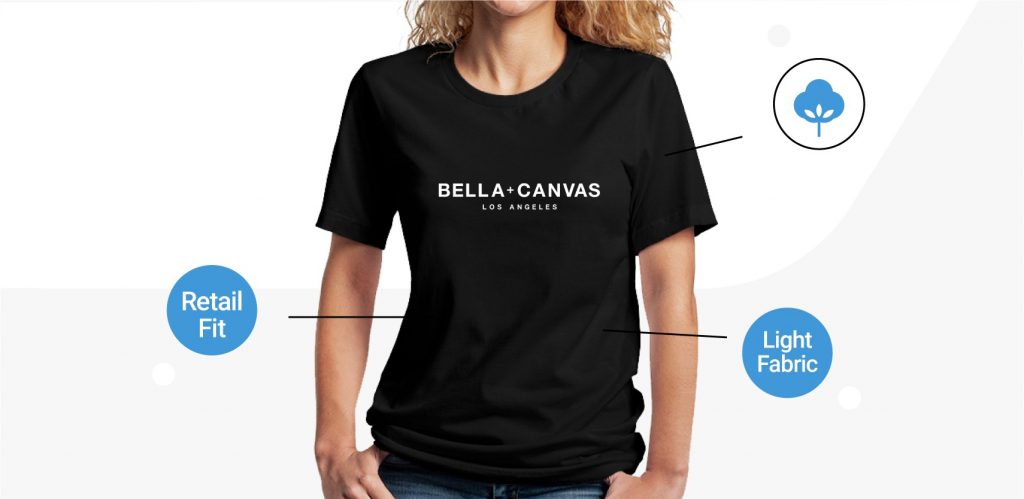
Launching from the humble beginnings of a garage in 1992, this organization quickly rose to prominence through a consistently innovative strategy of delivering on identified market needs. They’re now the largest dyer and cutter of apparel in the United States. As a core-value company, they’re dedicated to providing a high degree of assurance against sweatshop usage or reliance on unreasonable or unsustainable manufacturing practices. To fulfill these promises, the company maintains a Platinum WRAP (Worldwide Responsible Accredited Production) Certification, identifies itself as a participating member of the Fair Labor Association, upholds the FLA Workplace Code of Conduct and Principles of Fair Labor and Responsible Sourcing.
Furthermore, the company prides itself on sustainability with a “virtually zero waste” status and efforts toward reducing energy and water usage. While the accreditations above can be a mouthful, it all sums up to an American company that cares about its workers, products, and the environment as much as its profits – a very marketable position nowadays.
Here are the three most popular shirt models by Bella+Canvas:
Women’s Jersey Short Sleeve Deep V-Neck Tee
Women’s Favorite Tee
Unisex Jersey Short Sleeve Tee
Delta
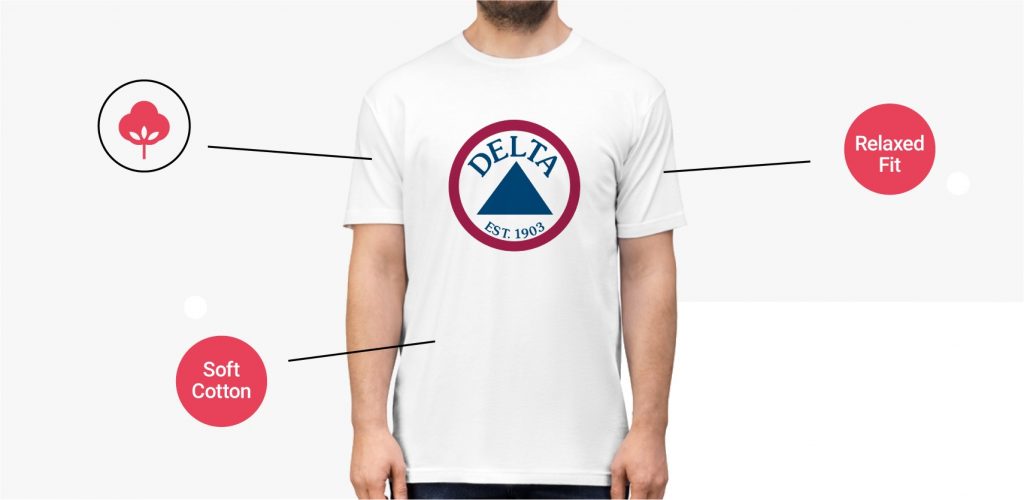
A large player owning multiple brands, Delta is a massive provider warranting the full capacity of seven facilities spread across America and the territory of Puerto Rico. As a large player, Delta recognizes the impact it can have on the environment. Therefore, it’s made strides toward sustainability and the use of recycled materials.
Here’s the most popular shirt model by Delta:
Gildan Activewear Inc.
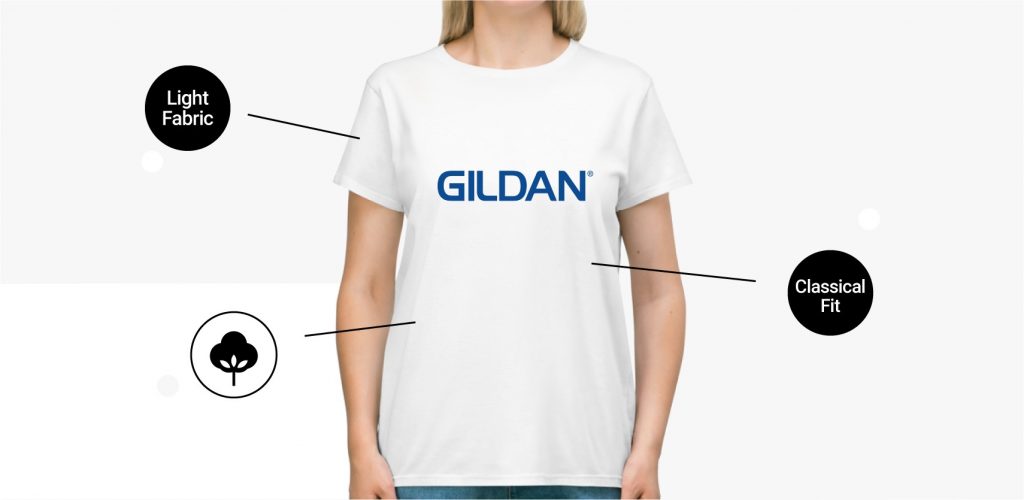
This is a Canadian clothing manufacturer producing items destined to be screen printed then resold by others. Founded in 1984, they provide branded and private orders for a large number of other companies, including Under Armor, New Balance, PowerSox, All Pro, Auro, SilverToe, and many more. Gildan operates facilities in multiple countries, certain implementations allowing the provision of several cheaper-priced goods than Chinese production centers.
Here are the three most popular shirt models by Gildan:
Unisex Ultra Cotton Tee
Unisex Heavy Cotton Tee
Women’s Heavy Cotton Tee
Women’s Premium Cotton Tee
Kids Heavy Cotton™ Tee
Men’s Fitted V-Neck Short Sleeve Tee
Women’s Softstyle Tee
Anvil (by Gildan)
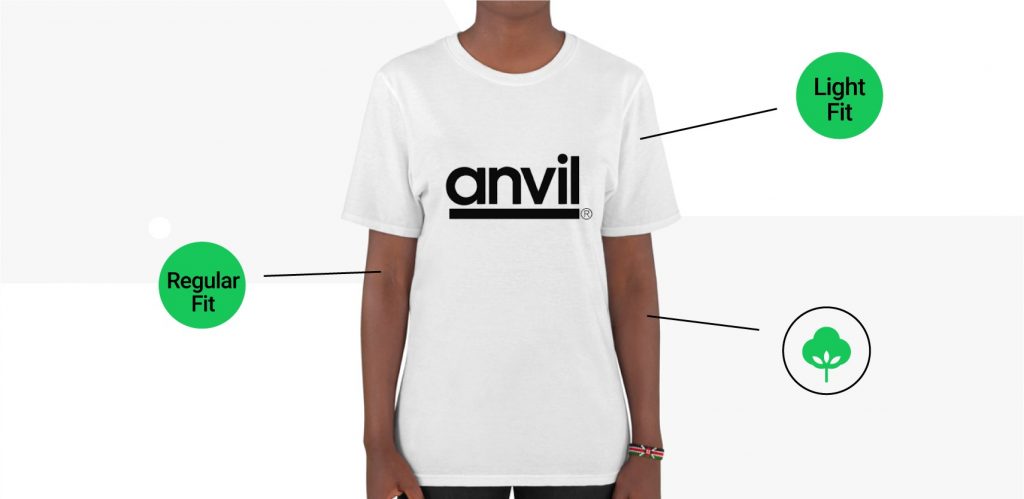
A subsidiary of Gildan, this branch focuses more on the modern lifestyle. It’s applications of neck types, textures, and other design features are tailored toward fitting the needs of the contemporary customer.
Here are the most popular shirt model by Anvil:
LAT Apparel
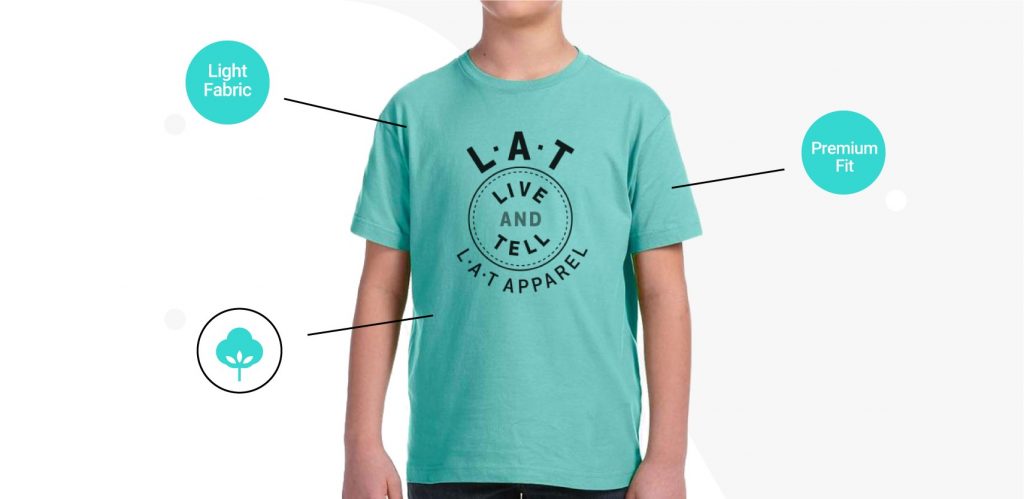
LAT Apparel offers high-quality blank products for men, women, teens, kids, babies, and even dogs. They focus on exceptional printability, incredible selection, and superior fit. All of their fabrics are carefully developed to ensure a great look using combed ringspun cotton to provide outstanding comfort and a well- printable surface. All of their apparel is produced ethically in socially-compliant, WRAP-certified (Worldwide Responsible Accredited Production) factories that are sweatshop-free and child-labor-free. They deliver exceptional quality, superior softness, and close attention to detail.
Here’s the most popular shirt model by LAT Apparel:
Next Level
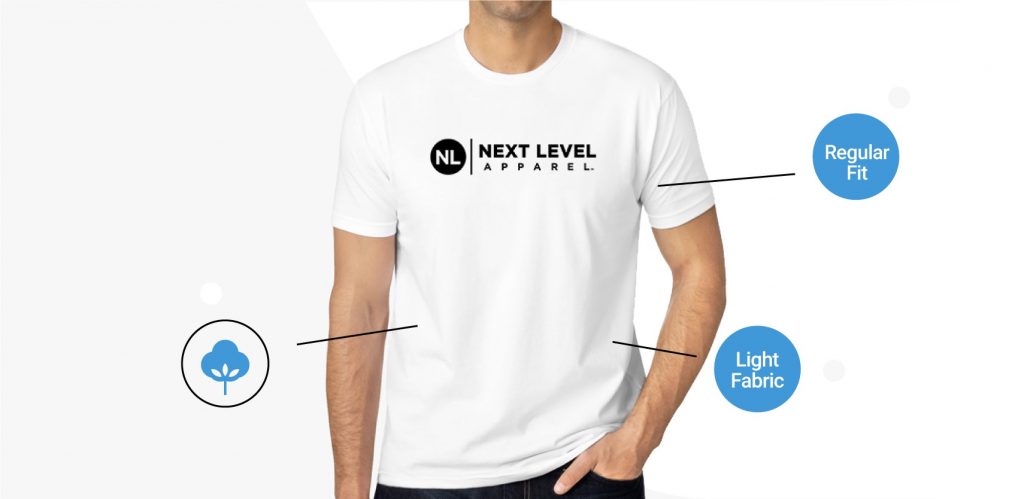
A leader in the industry due to the use of innovative fabric blends, Next Level utilized combed, ring-spun cotton fabric to make their products “heavenly” soft. Since their founding roughly 12 years ago, they’ve endeavored to increase their color palette, fitting spectrum, and style diversity – defining them as a top supplier of fashion blanks to the world market. Their national distribution network includes over 28 locations, making accessibility and fulfillment a more likely reality.
Next Level Apparel follows all CPSIA (Consumer Product Safety Improvement Act) standards. Their WRAP certified (Worldwide Responsible Accredited Production) factories are committed to providing the highest ethical standards of conduct and best quality practices. At Next Level Apparel, they strive to respect the rights of each individual while actively caring for the environment. In addition to being sweatshop-free and child-labor-free, they endeavor to take social responsibility for everything they do.
Here are the most popular shirt models by AS Next Level:
SG Clothing
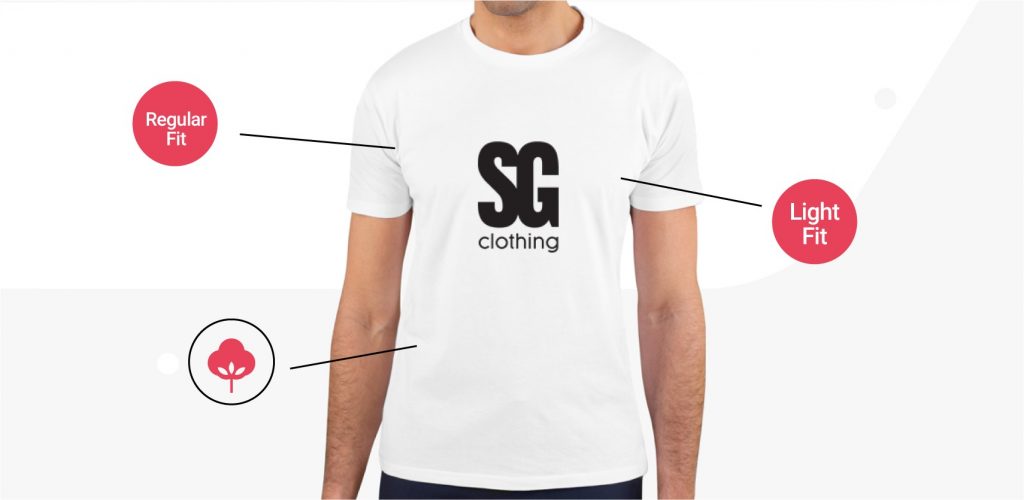
Launched in 2010, SG Clothing offers a range of clothing for men, women, and children. Primarily purposed for promotional wear, this company continually incorporates additional styles, fabrics, fashion cuts, trending colors, and other decorations and variations. Lastly, their tagless featuring means that any branding will be entirely a merchant’s own.
Here’s the most popular shirt model by SG Clothing:
Sport-Tek
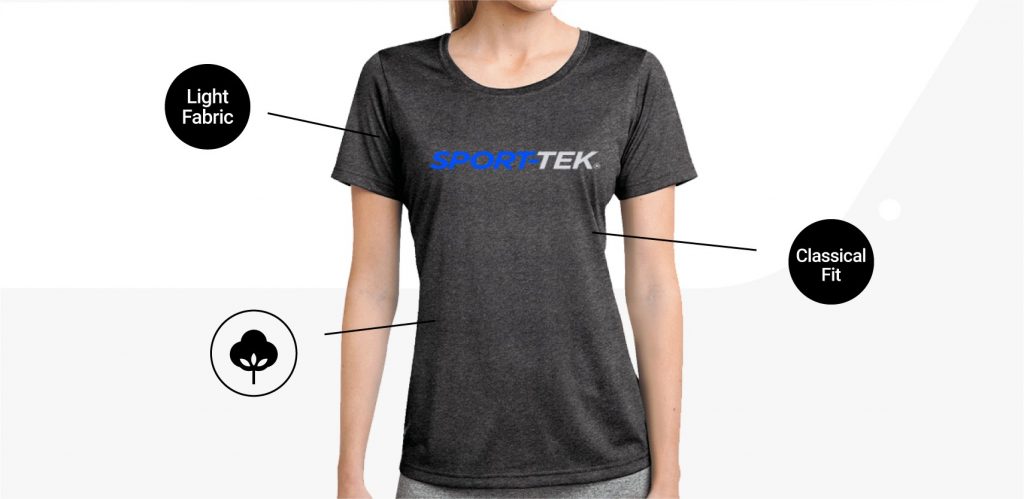
Launched in 2004, Sport-Tek offers athletic wear that combines high-performance technical fabrications with vibrant color. Designed for every member of a given team, Sport-Tek outfits men, women, and youths with winning athletic apparel that breathes, manages moisture and odor while possessing superior printability. The option of several styles optimizes printability with bleed-resistant PosiCharge (a color-locking, stable fabric that locks in color) technology.
Here are the most popular shirt models by Sport-Tek:
STANLEY/STELLA
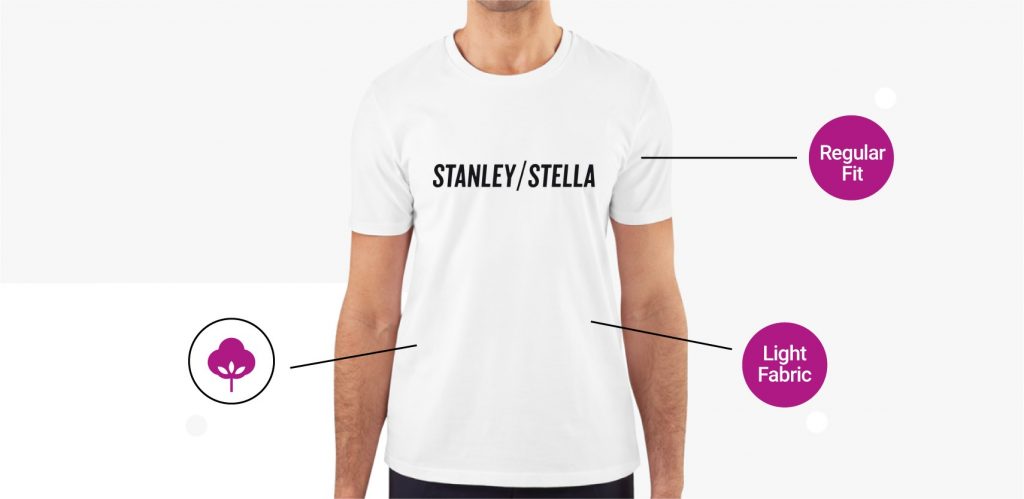
Originating in 2012, STANLEY/STELLA focuses on the simple essence of garment production. Founded by the visionary Jean Chabert, the company operates in an effort to change the overall perception of the textile industry. To further this goal, the business endeavors to make sure that its workers, customers, and the environment as a whole are respected and preserved. In order to produce authentic, responsible products, the company works to make pieces that initiate change toward more ethical, humane, and ecological orientations.
Here are the most popular shirt models by STANLEY/STELLA:
3. Print providers and printing techniques
These companies are specialists in the printing of blank products. This means that, instead of making their own garments, they instead receive large orders of non-printed items to be printed at a later date relative to the desires of the purchasing customer.
Different providers use different methods for printing. The most common forms of printing at direct-to-garment (DTG) printing, dye-sublimation printing, and screen printing. We’ll go over those differences in a bit more detail below. The important thing is that each method has various pros and cons that make big differences in whether or not a t-shirt sells.
Direct-to-garment (DTG) printing
This is fairly self-explanatory – well, at least topically. The DTG process includes incorporating a colored dye directly into the fabric of the t-shirt. This process results in a full-color spectrum of bright, vivid designs. The large-scale printers that print providers use are similar to conventional paper printers except that, instead of paper, the machine prints to fabrics.
DTG assumes the entirety of a design will need printing. This is a great feature for non-white shirts. Some printing methods assume a printing surface is already white, so they don’t use white ink to print the white spaces of a design. So, while that design may come out perfect with a white base, that same design may have issues on a red, blue, etc.
DTG care : This method requires a little bit of consideration to keep designs fresh throughout the life of the shirt. For the best results, turn garments inside-out before washing on cool to cold. We recommend avoiding tumble dry and additional spin cycles.
Screen printing
With this method, ink is pushed through a screen onto a shirt. Screens are only capable of having one color. So, for print designs with more than one color, multiple screens will be used. This means that screen printing is ideal for designs with only a few colors, rather than multi-hued artwork.
Furthermore, this is one of the fastest printing methods available; it’s capable of printing several hundred shirts within a single hour. The ink pressed through the screen of the shirt lays on top of the surface of the garment, rather than meshing with the fibers of the fabric.
Screen printed care : Wash inside out with a mild detergent to prevent pilling. Cool water (below 90 degrees Fahrenheit is recommended. When ironing, use low settings and iron from the inside of the garment, rather than touching the printed surface. Avoid dry cleaning services, chlorine bleach, fabric softeners, and steam ironing.
Sublimation printing
Sublimation is the chemical process whereby solid matter transforms into a gaseous state without passing through the liquid stage. Think about a piece of material being vaporized, but with a more friendly application. When this action is applied to printing processes, it infers that the solid matter of the dye is the subject. Dye-sublimation, in other words, is the act of transmuting it into a different state of matter.
The opposite of sublimation is deposition, otherwise known as desublimation. This is where a gas forms into a solid, instead of the conventional gas to liquid (condensation). Think about the frost on a window. That’s an excellent example of gas becoming a solid without liquifying first.
In this process, a special transfer paper is used to transfer the design to the shirt. A mirror image of the design is printed onto that paper with sublimation-friendly dyes. Those dyes are often water-based, making a smaller environmental impact than many other alternatives. The dye-infused transfer paper is lined up with the proper printing areas on the shirt, then a combination of heat and pressure are applied. These intense conditions cause the dye to rapidly gasify, meshing with the individual fibers of the shirt and forming a permanent bond.
All in all, sublimation printing is an ultra-modern manifestation of printing processes that results in a product with incredibly high-definition, great detail, and vivid coloring.
Sublimation care : Machine wash inside out in cold water. Dry using low heat or clotheslines. Mild detergents are recommended while avoiding fabric softeners and dryer sheets.
4. The difference between print providers and brands
There’s a bit of overlap between the two, particularly as the concept of a brand is rather broad. So, while the usage can be rather varied, we’ll go over exactly how and what we’re talking about relative to brands and print providers.
But, a print provider is itself a brand, right? Well, yes. A print provider actively works to develop itself and its own personal identity. However, what we mean here is that print providers are the ones that apply printed designs to blank garments produced by those brands.
For example, the Gildan brand shirt model 5000 is a universally popular product. Those items won’t come with the Gildan logo stamped on it, instead having that space open for printing by a print provider. See, the idea is that a print-on-demand merchant takes the base layer of that Gildan 5000, applies their own artwork through a print provider, and then has the print provider ship the finished product along to the customer.
5. Popular print providers
At the moment there are a ton of stellar print providers currently in operation. The following is a list of some of the more popular ones, but there are many more outside of those specified.
Awkward Styles
This LA-based company is a print-on-demand dropshipping entity dedicated to helping others create their own styles of clothing and home decor since their founding in 2014. They strive to collaborate with the industry’s top printing solution providers. To achieve their goals, they print in a variety of different techniques.
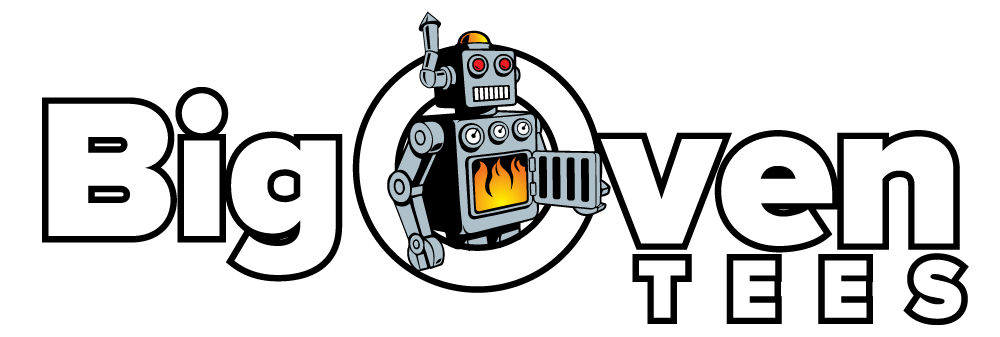
Big Oven Tees (The United States and Canada)
This company supplies a variety of components to brand-name apparel companies, police, military, professional athletes, and the Olympic games since 1945. Regardless of whether a customer wants garments for personal use, a team function, events, or any other application, Big Oven Tees is ready to serve. In addition to the shirts their name implies, this company also moves pants, polos, button-downs, and a host of other products.

Drive Fulfillment
At a time when brands are continually seeking to engage consumers across marketing, fulfillment, and digital platforms, Drive Fulfillment maintains a unique position to deliver across all channels. Today, with over 100 employees, their fulfillment center offers clients (both current and prospective) a diverse suite of services. Specializing in e-commerce picking, packing, shipping, kitting, assembly, warehouse management, and technology platforms, they are excited to simplify fulfillment for everyone involved in the POD ecosystem.

Duplium
With a knowledgeable team coupled with industry-leading technology and decades of experience, Duplium is a one-stop-shop to help bring customer products to market faster and within budget. Duplium serves all industry sectors – ranging through music bands, entertainment, corporate, religious, professional sports, health and fitness, and food and beverage. Duplium’s facility is proud to be home to the largest rooftop solar electric array in Ontario. A 500kW (kilowatt) solar panel array powers the manufacturing and printing operation and distributes any unused power back into the local grid. Duplium is licensed by the Ministry of Environment and maintains a strong recycling program for paper/pulp waste.
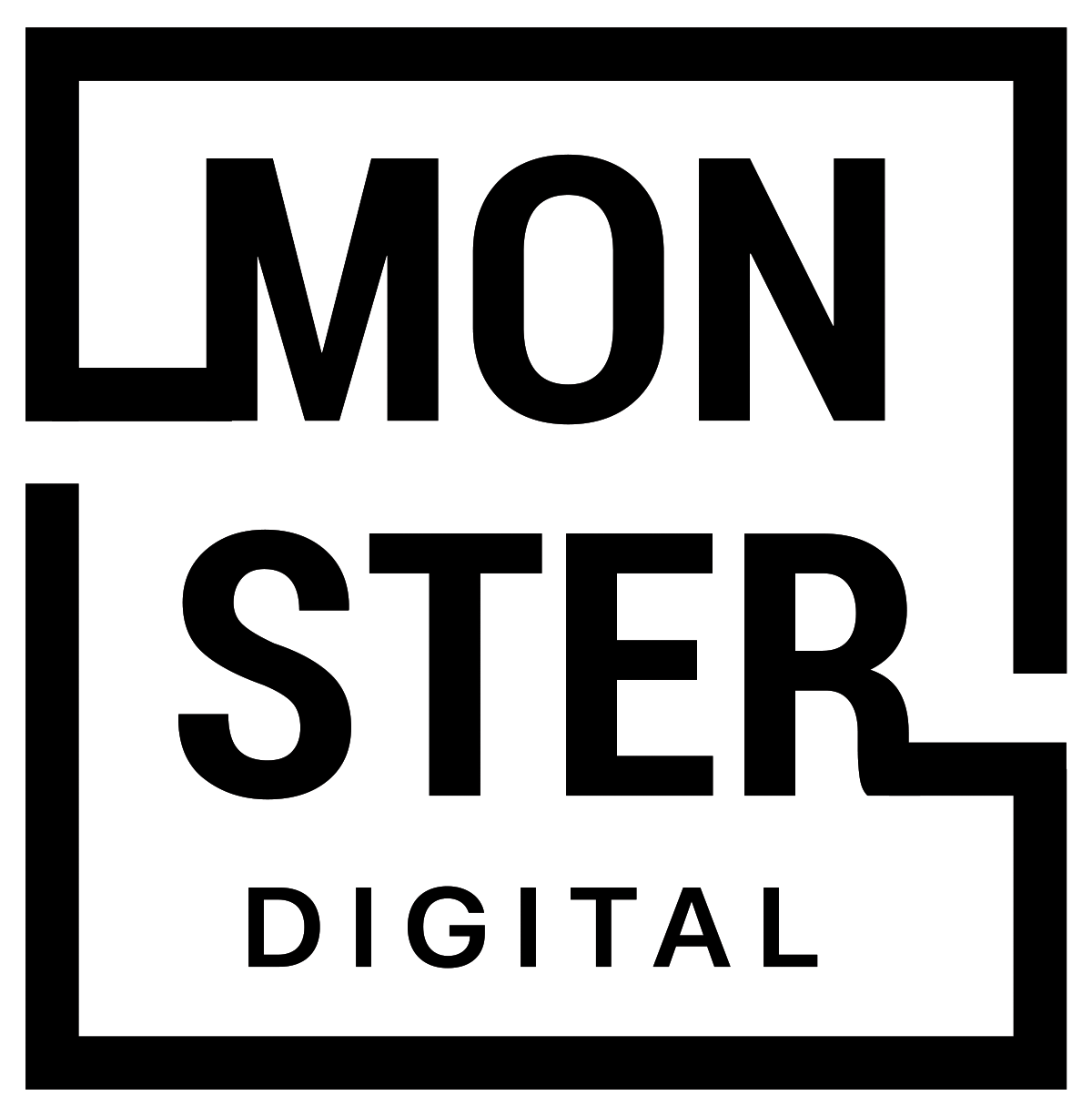
Monster Digital
This company is a state-of-the-art, direct-to-garment printing operation with a focus on delivering high-quality print results and speed to market for your customers. They invest heavily in technology resulting in robust software, and factory and operational efficiencies. As industry leaders in on-demand printing and fulfillment, their executive team has seen decades of success in all facets of manufacturing, embellishing, and fulfillment of soft goods.

MWW On Demand
With over one million square feet of manufacturing and distribution space, MWW Inc. is one of the largest and most advanced facilities of its kind. When a business requires high-quality products made in the USA, MWW On Demand is an excellent consideration for a prospective t-shirt vendor. MMW On Demand, a division of MWW Inc., is proudly known as the leader of the textile and custom printing industry. In alignment with its history of identifying new opportunities to create quality products, MWW on Demand has led to the development of current technologies, placing a high priority on technology investment and innovation. A great example is MWW’s utilization of on-demand and woven-on-demand manufacturing. On-demand printing services are the wave of the future, and MWW continues to add new services, products, and manufacturing capabilities. And a family-owned business built on quality American-made products and outstanding customer service, we continue to thrive in the beautiful mountains of North Carolina.

MyLocker
This company was founded in 2006 in Detroit, Michigan. Since then, it’s become one of the biggest print on demand companies in the area. The organization offers an enormous stock of colorful products: t-shirts, sweatshirts, jackets, caps, pullovers, wind shirts, blankets, duffle bags, totes, etc. The company goal is to provide a degree of fun in the process behind a merchant creating their own custom designs – using any combination of graphics, logos, colors, names, and years – and see actual products come to life. Athletics, baseball, basketball, football, ice hockey, field hockey, cross country, soccer, swimming, diving, lacrosse, golf, softball, tennis, track, wrestling, cheerleading, water polo, rugby, volleyball, skiing, snowboarding, sailing, gymnastics, band, orchestra, and any other activities are all possible. My Locker processes orders instantly and ships directly to the purchasing customer’s home. As of today, My Locker has over 110,000 custom online shops for schools, teams, leagues, etc. MyLocker also has major partnerships with industry specialists, websites, and team/league management companies. As well as lots of advanced (expensive) equipment to make optimized products, they have a wealth of experienced employees to manage production.

OPT OnDemand
This company maintains a rich experience in all available printing techniques and their ability to offer alternative solutions for final products. While technology and processes are certainly important, no less important are people and their experience. OPT OnDemand’s more than two hundred employees all strive to ensure that their deliveries are on time and in perfect quality. Their customers include major companies in the fields of FMCG, E-Commerce, advertising agencies, and several key players in the licensing and entertainment industries. They count themselves among the pioneers of ecological printing. OPT was one of the first print shops in Europe to achieve the GOTS (Global Organic Textile Standard), one of the strictest, most respected certifications available. This adherence helped them fine-tune their production processes in order to be more sustainable, ethical, and fair. Even with this certification, they continue to strive toward making their progress more sustainable, effective, and ethical production every year.

Print Geek
This company was founded with a desire to serve the Canadian community and world at large with print-on-demand services. Print Geek believes in the power of vision and resilience; the president of Print Geek co-founded this vision in a small garage. Since then, it has flourished and grown into a large company. Today, Print Geek continues to pursue strategic partnerships with e-commerce enterprises to better provide as well as expand its services. Every decision at Print Geek is inspired by its mission to provide the highest standard of products and services to both their Canadian clients and customers. With years of expertise and experience, Print Geek is proud to be regarded as a manufacturing leader in a rapidly changing industry. Therefore, they work hard to stay relevant in the evolving market. They are strategically located in Toronto, close to vendors, shipping providers, and most importantly, a vast amount of Canadian customers. This is achieved through technology and automation, which is a core belief of Print Geek.

Textildruck Europa
Textildruck Europa is a family-run business in the heart of Germany. They’ve been instrumental in the European printing industry since they began operations roughly 50 years ago. Textildruck Europa has cemented its position as a trusted print provider. They’ve served major brands around Europe such as music festivals, fashion brands, and licensed-retailers. Certified five years ago by the Global Organic Textile Standard, they attach great importance to the environmentally friendly production of all their products.

The Dream Junction
The Dream Junction is a close-knit family business of creative people, passionate about music, art, and fashion. What first started as a small t-shirt printing business has grown into a DTG powerhouse with two locations throughout the East and West coasts of the US. The Dream Junction works in close collaboration with OvalJet to produce high-quality printing services at a low cost.

The Print Bar
An Australian operation, The Print Bar is an award-winning, custom-print studio set on bringing customer ideas, creativity, and character into the wondrous world of print. They’re in the business of print, design, and creativity. Their website is proud to expound that they’ve garnered a sterling reputation for their quality prints, creative workshops, live paintings, and art exhibitions. Run by a team of designers, artists, and print specialists, The Print Bar’s goal is to take their client’s ideas into the world. They believe there’s a wealth of untapped creative potential in all of us and it’s time this potential was shared around.
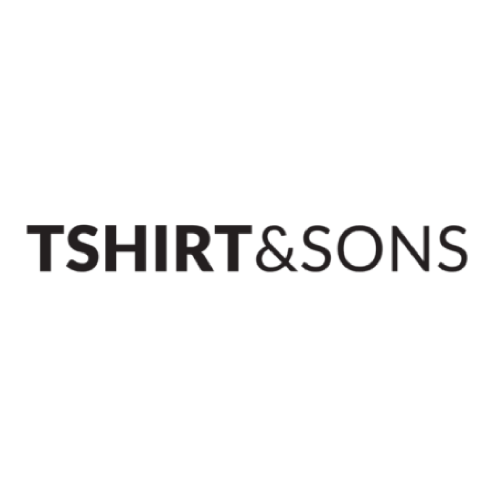
T-shirt and Sons
Having invested heavily in the digital-print and direct-to-customer sectors, T-shirt and Sons has become the largest direct-to-garment printer in Europe. Their experienced team provides comprehensive project management – from concept to manufacturing. With six Kornit DTG machines (super powerful DTG printers), this company is the largest direct-to-garment printer in Europe. The quality of print from the Kornit machines is unmatched and the speed at which it prints means they can quickly turn large volumes. The bespoke nature of DTG print means it’s perfect for e-commerce businesses. T-Shirt & Sons maintains a responsibility to both the environment and the community; they view this as being important on a local, national and global level and feel that their industry has a valid part to play in the reduction of exploitation and pollution. As such, they adhere to strict standards of safe and fair employment practices including health and safety, discrimination, working hours, and forced or underage labor. These standards are clearly laid out in the ETI Base Code. This aspect of our policy extends to our suppliers and we aim to trade only with companies who have successfully addressed the ETI Base Code. They primarily use water-based inks. The continued use of these and PVC Free inks will help to reduce any negative impact on the environment. They work closely with the Water Authority (who actively monitors and tests T-Shirt and Sons’ effluent). All their water is filtered before it enters the sewer. All other waste is processed by licensed contractors. All their staff are trained to separate waste for recycling, encouraged to reuse materials where possible, and made to understand the full value of natural resources.

SwiftPOD
This company was founded with one goal in mind: providing high-quality, smart, and reliable print-on-demand shops for all a customer’s eCommerce needs. This passion for excellence has driven them since the beginning and continues to inspire them today. SwiftPOD knows that every product counts, and strives to make each and every product perfect for their customers. SwiftPOD has proven experience in production, with over five million units produced per year. They maintain a Top Rated Seller status on Amazon, Walmart.com, eBay, and over 20 other online marketplaces. SwiftPOD customers consist of massive licensors, famous social media influencers, and even local mom-and-pop shops online. They remain focused on pushing the boundaries of SWIFT fulfillment and high-quality printing.
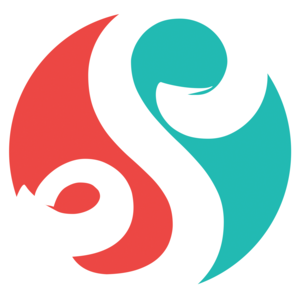
Stoked On Printing
Always on the cutting edge of technology and print techniques, Stoked on Printing views the print-on-demand ecosystem as the change the world needs to reduce the amount of waste created by standard supply chains. Their adherence to sustainable printing and eco-friendly application makes them a particularly environmentally friendly company.
6. How to choose a t-shirt brand
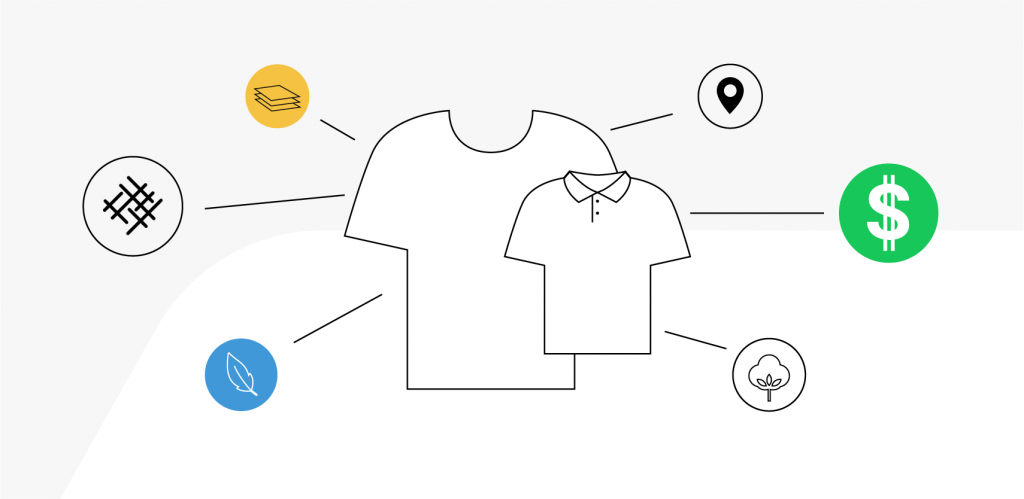
Ultimately, it’s all up to a print-on-demand merchant to make these decisions for themselves. It’s a balance between considering materials, fitting, costs, rising/falling trends, and the hundred other considerations that weigh up to one brand’s selection over another.
However, there is always a certain feel for each model of the t-shirt. One easy way to gauge for yourselves is to order a sample of a particular brand model. Once you have the finished product in your hands, it’s easy to see exactly how everything turned out – including shipping times relative to that location. This is particularly important for sizing, as a standard of one style may run a little different for another brand.
Indeed, it’s all about finding the brand that you connect with. When a shop owner is passionate about their products, that’s an energy that customers can connect with. As the reasoning behind your shop aligning with one of these brands is probably deep, feel free to share that information with your prospective customers in an ‘about us’ section, through blogging, social media, conventional advertising, or any other way to help get your audience on board with your store.
Best selling models
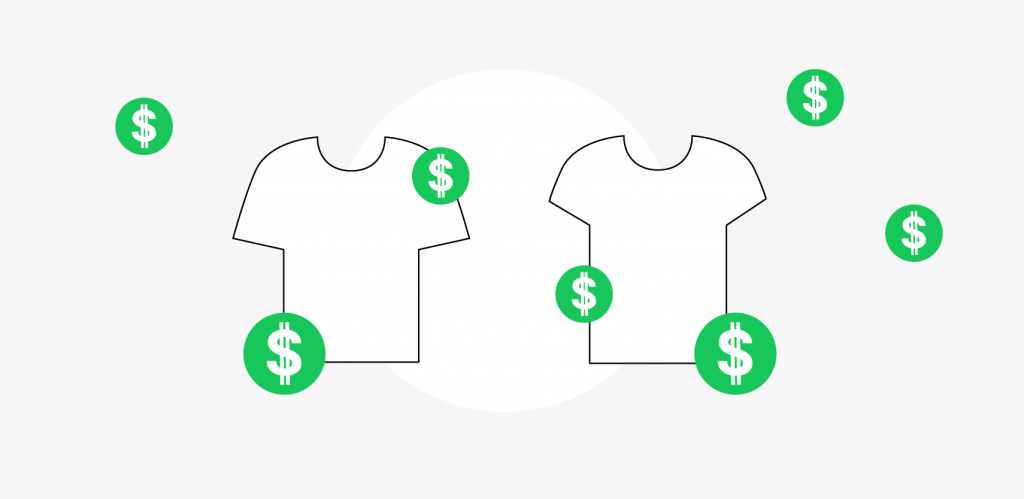
So, maybe you’ve fallen in love with a particular brand or model. If so, best of luck to you. We totally understand the appeal of a perfect fit. However, for those seeking a more data-centric view of which items are the most prevalent within the local market, here’s a quick breakdown of our top-selling t-shirt models:
Please be aware that the data of this section reflects occurrences between March and September of 2020, a seven-month period.
1. Unisex Jersey Short Sleeve: Produced by Bella+Canvas, this garment was the clear top seller. Comprising roughly 40% of all t-shirt sales, this positioning solidifies the Bella+Canvas 3001’s place as an obvious leader within the print-on-demand environment.
2. Unisex Heavy Cotton Tee: Another POD staple, the Gildan 5000 took second place with 34% of all t-shirt sales. As such, this model is another significant player; it’s worthy of consideration for any vendor.
3. Men’s Cotton Crew Tee: With a rather steep dropoff after the two leaders, the Next Level 3600 makes an appearance between 5-6%. Though significantly lower than those above, 1/20th of the market is still a big piece.
4. Men’s Fitted Short Sleeve Tee: In another leading appearance by Gildan, the Gildan 6400 secured a sizable 5% of all t-shirt volume. This makes a total of almost 40% of all sales, rivaling Bella+Canvas’ top position.
Best selling brands
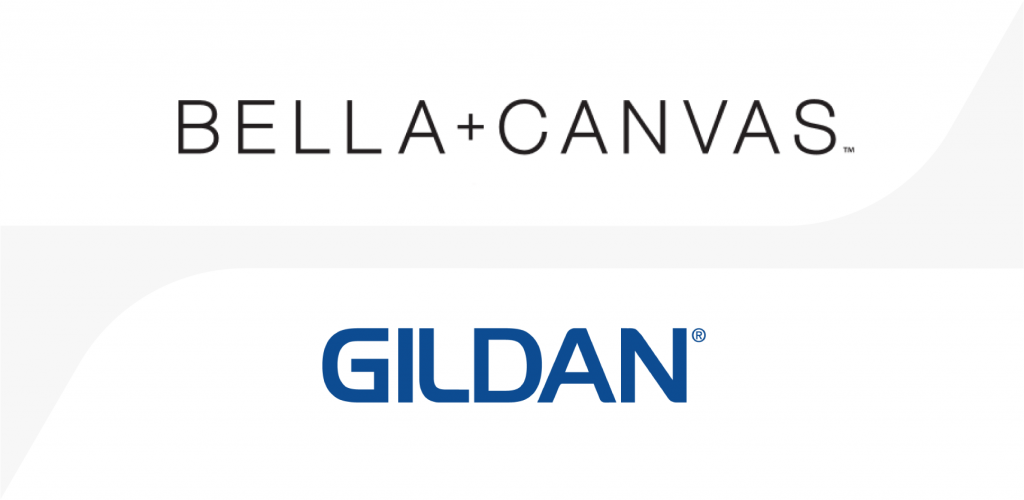
Now, while those listed above were the front runners regarding individual t-shirt sales, it’s worth looking into the larger context of which brands end up selling the best, as well. Considering this, a total of almost 75% of all Printify t-shirt sales (within the specified time period) were split between Bella+Canvas and Gildan. More specifically, it was the Unisex Jersey Short Sleeve (Bella+Canvas 3001) against Gildan with its Unisex Heavy Cotton Tee (Gildan 5000). From there, it moves on to Next Level with the Men’s Cotton Crew Tee (Next Level 3600).
Best selling colors
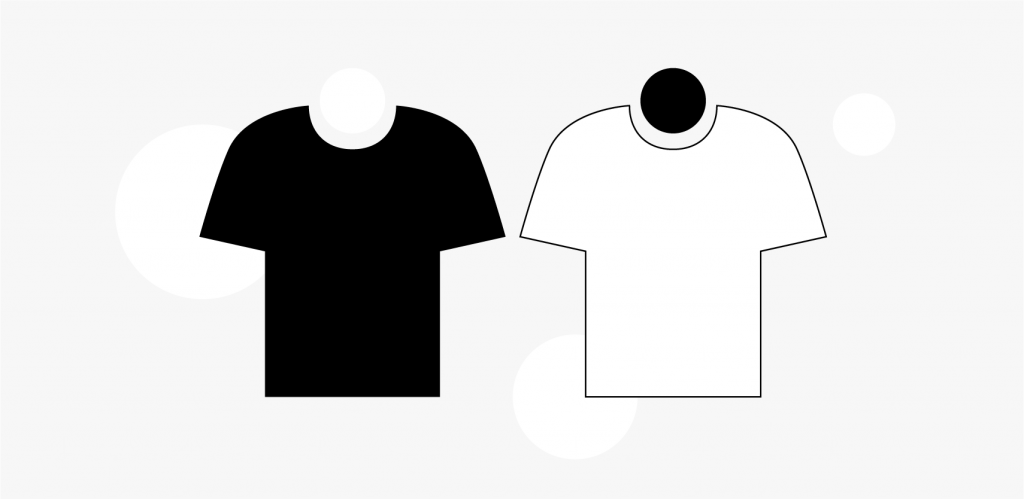
Black and then white. It’s clear and simple. When a list of the top-20 t-shirts sold was compared, 18 of this grouping were black and two were white. This puts black so far ahead that it’s very possible an entire store could operate on black alone. Furthermore, as these two colors are the most commonly sold, print providers are more likely to have large stocks ready to go. This means that production times for black or white blank items are often lower than for rarer colors.
However, the list is still pretty clear colors sell from there. In listed order, the top six selling colors after black and white are:
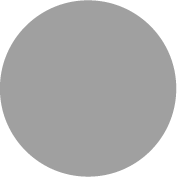
Sport Grey/Grey
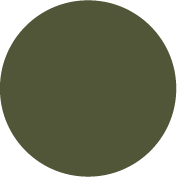
Olive
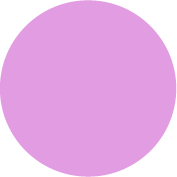
Soft Pink
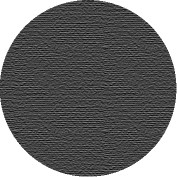
Dark Grey Heather

Athletic Heather
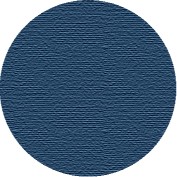
Navy/Heather Navy
All set? Thank you for being a great sport and going through the guide. We wish you great success and let’s move to the end!
Conclusion
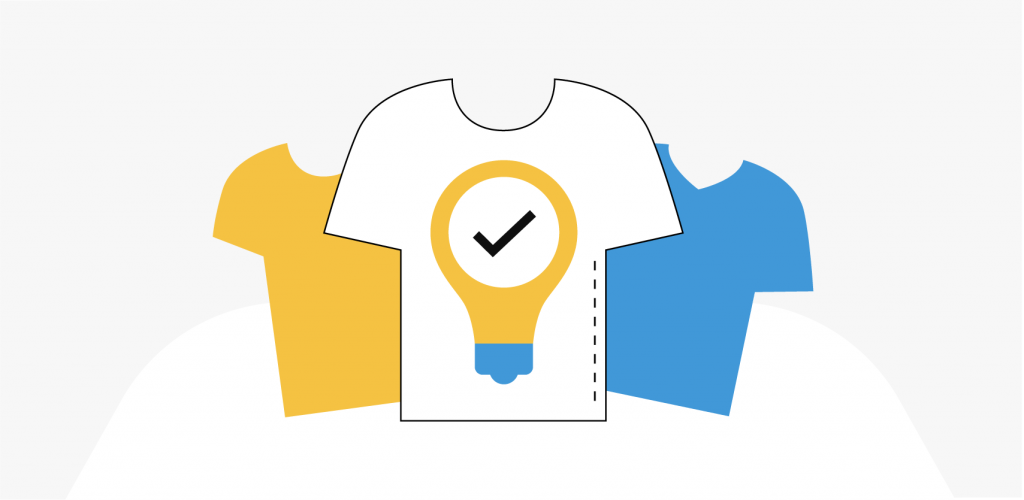
Print on demand has made getting into the t-shirt game almost entirely risk-free. That’s a huge draw. But while yes, there are a ton of POD merchants starting up their stores, there are even more out there wanting to buy customized t-shirts.
The concept of selling t-shirts is nothing new. However, the t-shirt has long since transcended its original role as underwear. Indeed, the former sweat-mop has risen to the position of an essential layer – a key player in modern fashion. With so many styles, fabrics, designs, etc., to choose from the formerly simple choice has spiraled into a jaw-droppingly vast array of past and present fashion. Furthermore, the t-shirt game is becoming yet more ingrained in the fabric of society every day.
Therefore, those merchants moving these lucrative products regularly experience the joys of running profitable shops. Selling a few t-shirts as a side hustle, or even a full-time gig is so easy; the print-on-demand business model is so simple anyone can do it. As such, this is a great time to capitalize on the growing need for customized t-shirts. The premium tee with a suit jacket has become a common sight in offices, plain tees are utilized in certain outfits to move attention along to accessories (shoes, anyone?), and gyms are full of t-shirt variations designed to fuel the inner beast.
The t-shirt is here to stay. It’s not going anywhere anytime soon. Armed with the information in this document, we believe you’ll be better able to capitalize on this blossoming market. Please let us know if there are any remaining questions. Best of luck to you, print-on-demand merchants of the world.
Woohoo! Thank you for reading this guide and let’s start selling your custom t-shirts.
